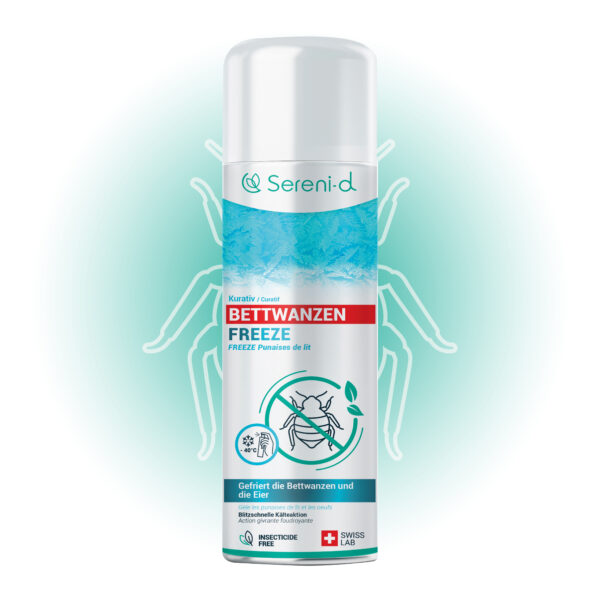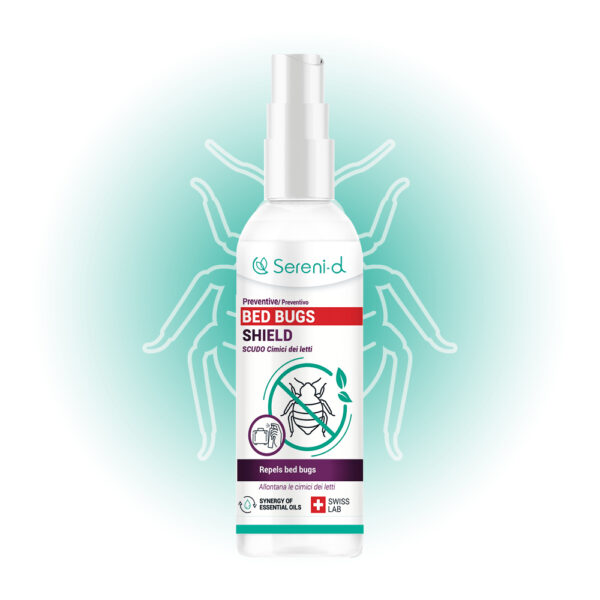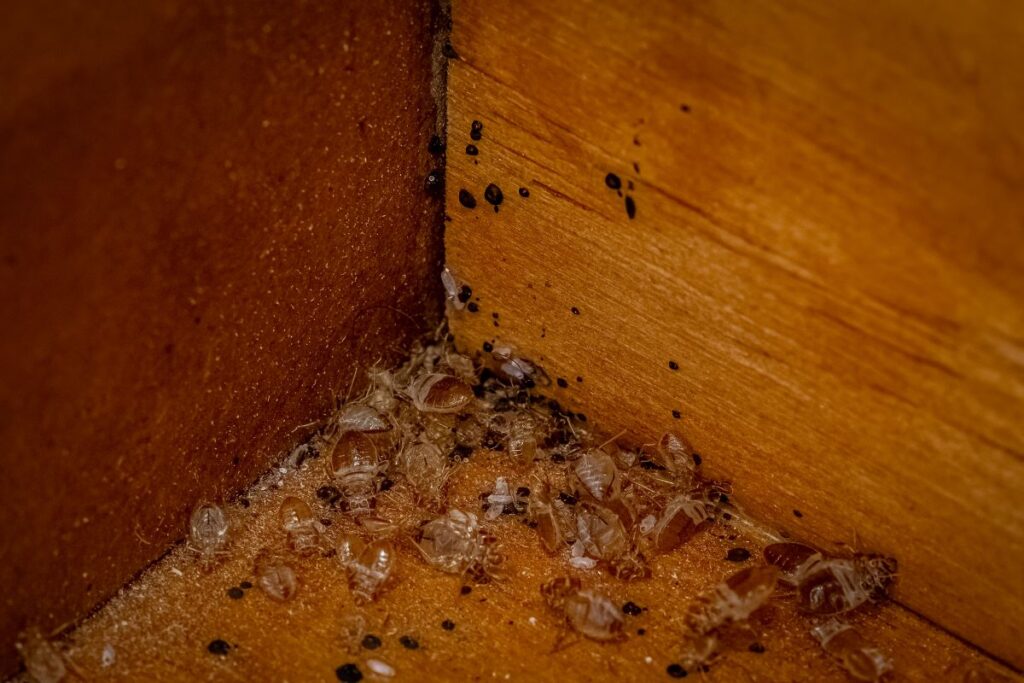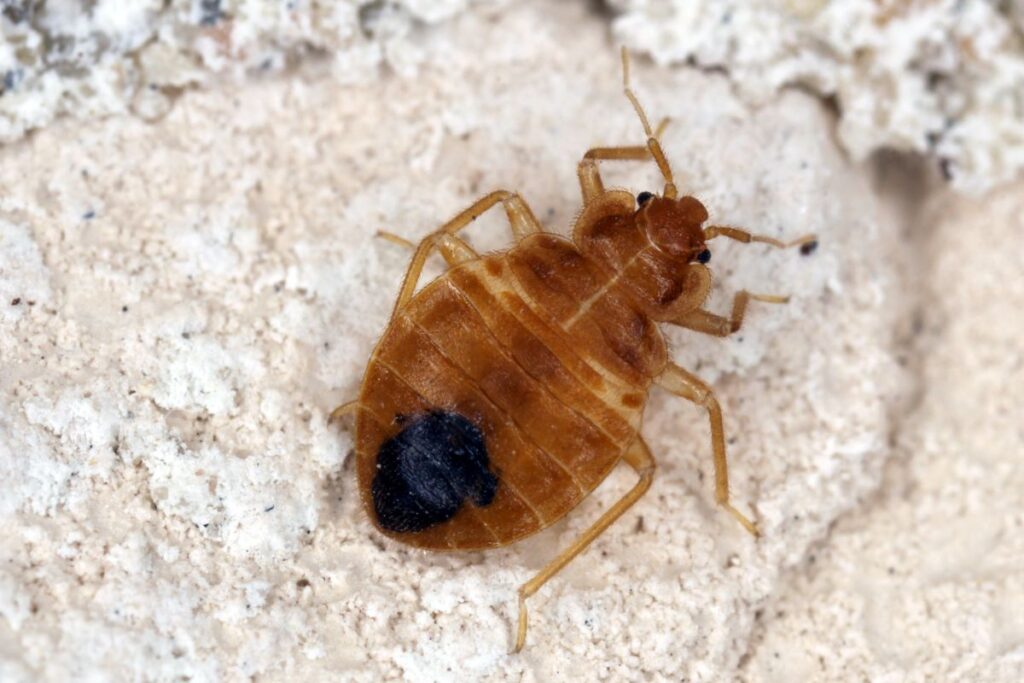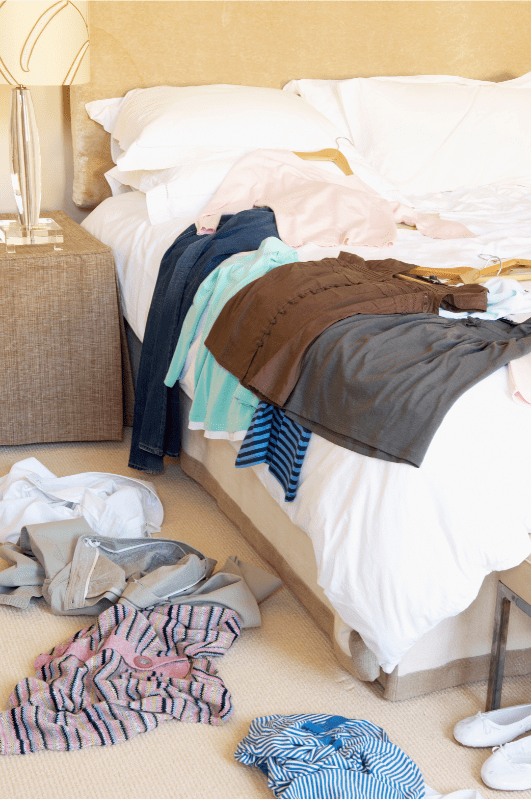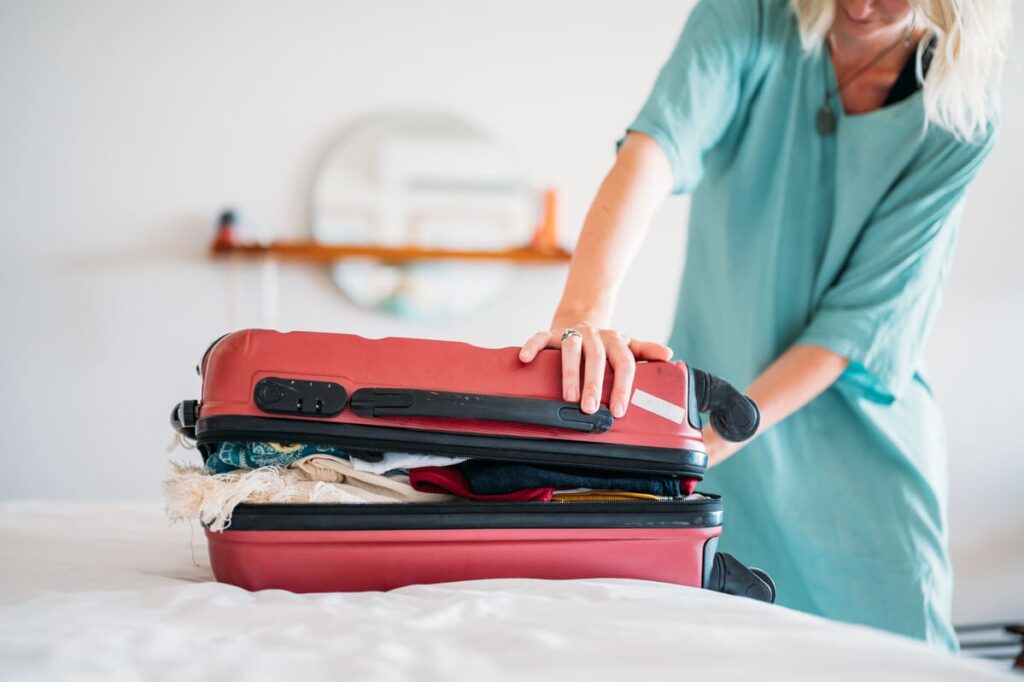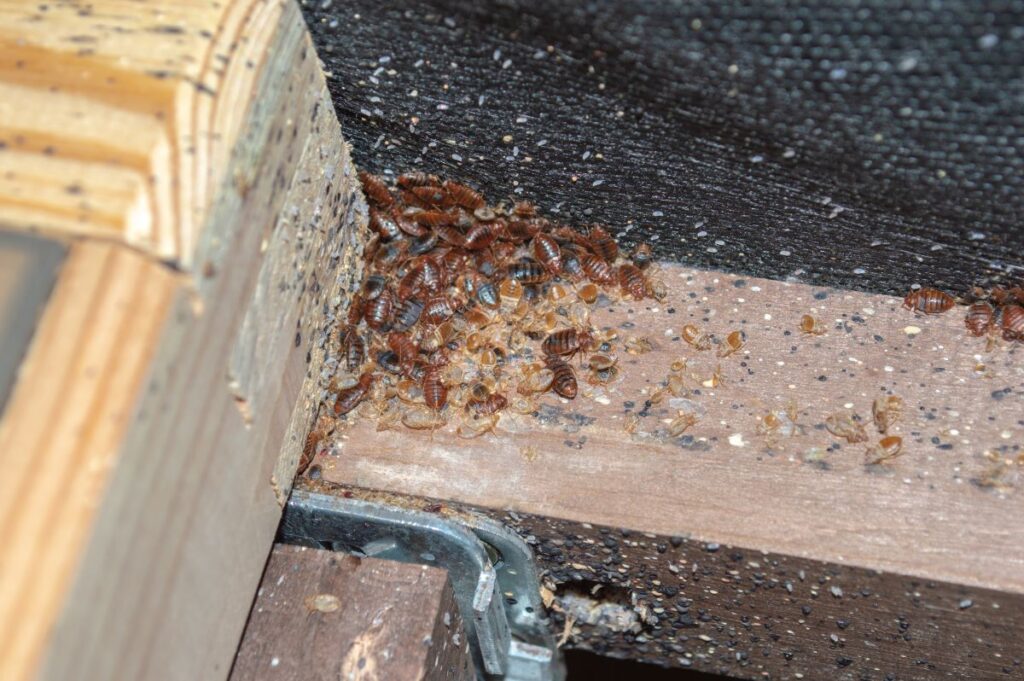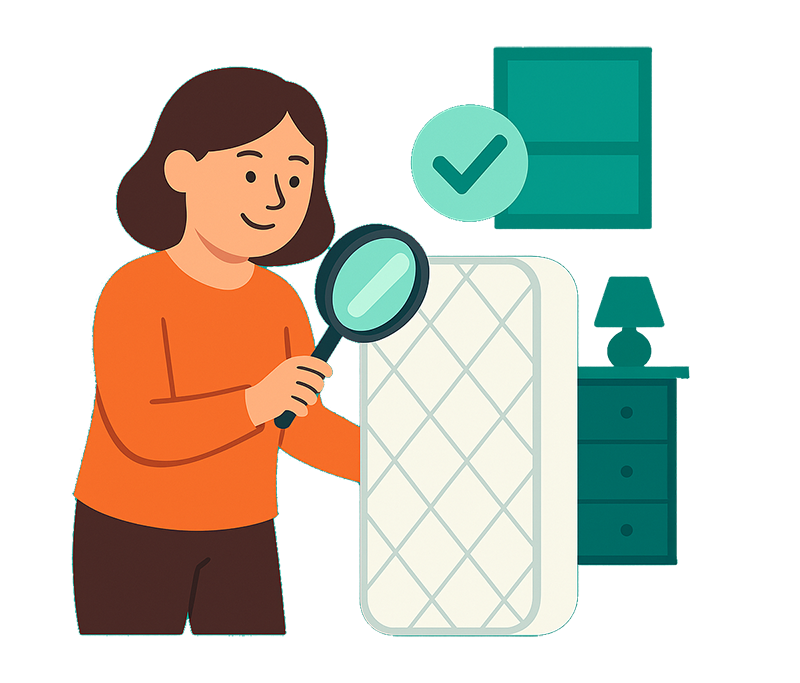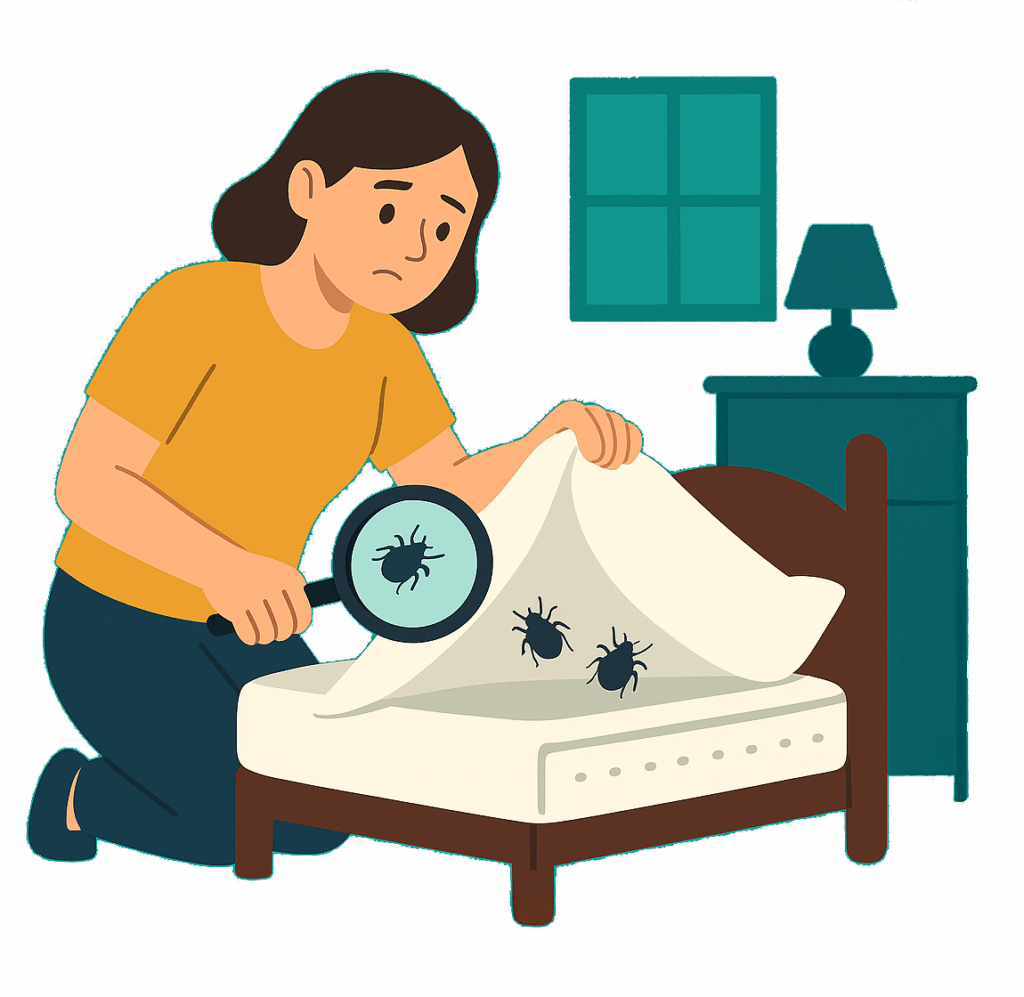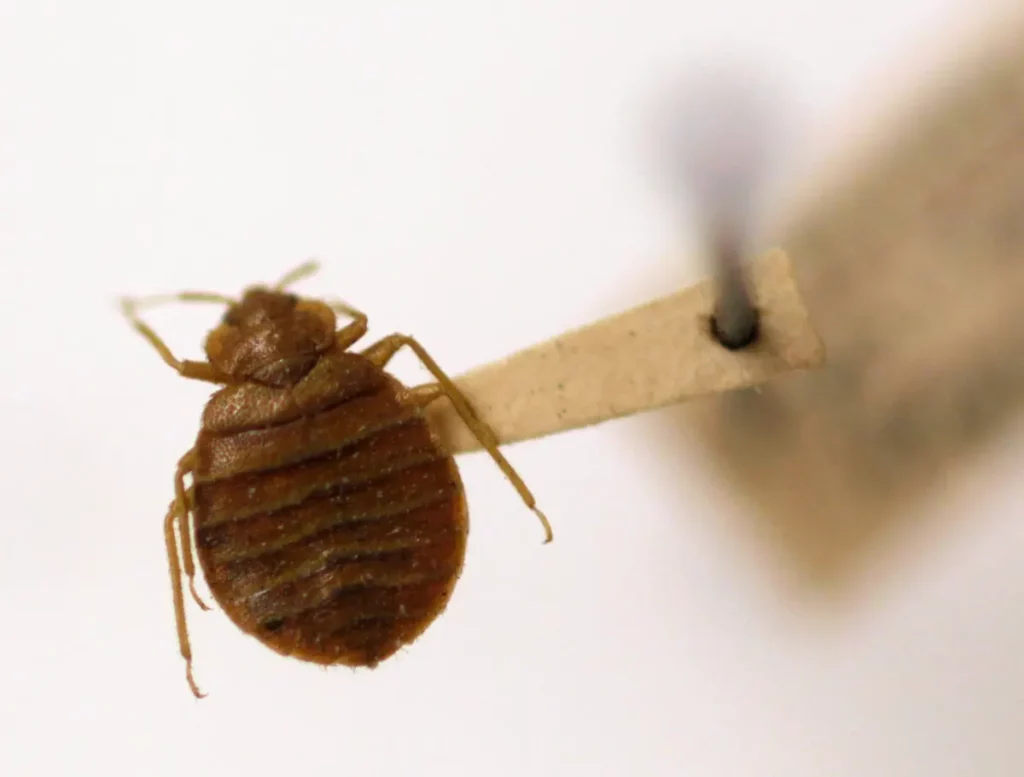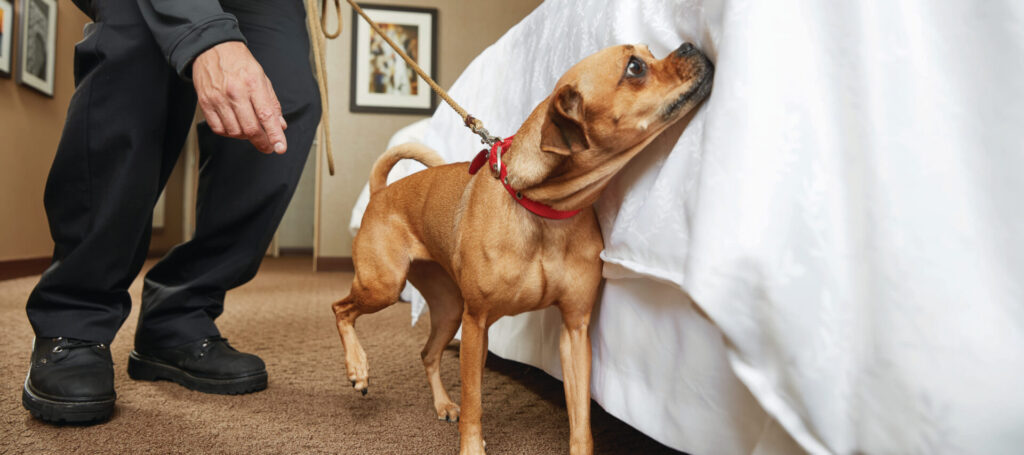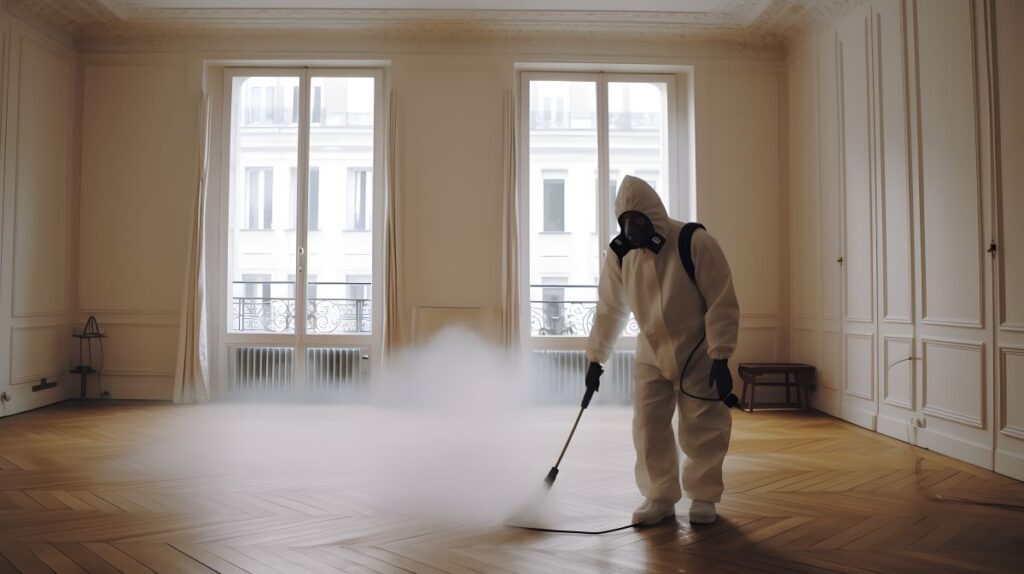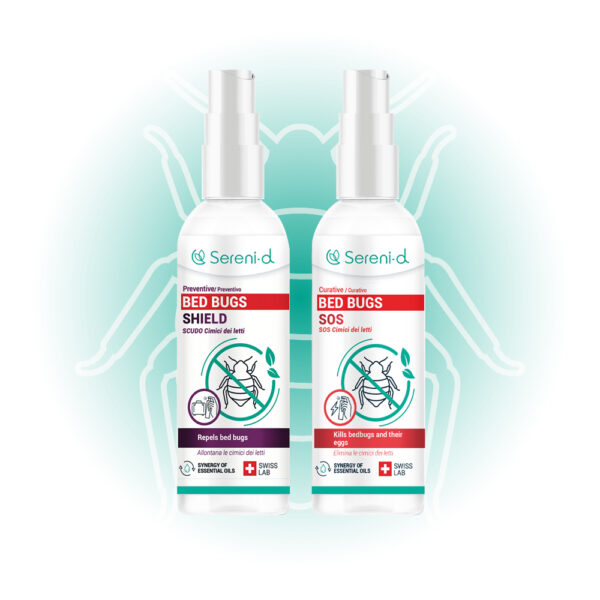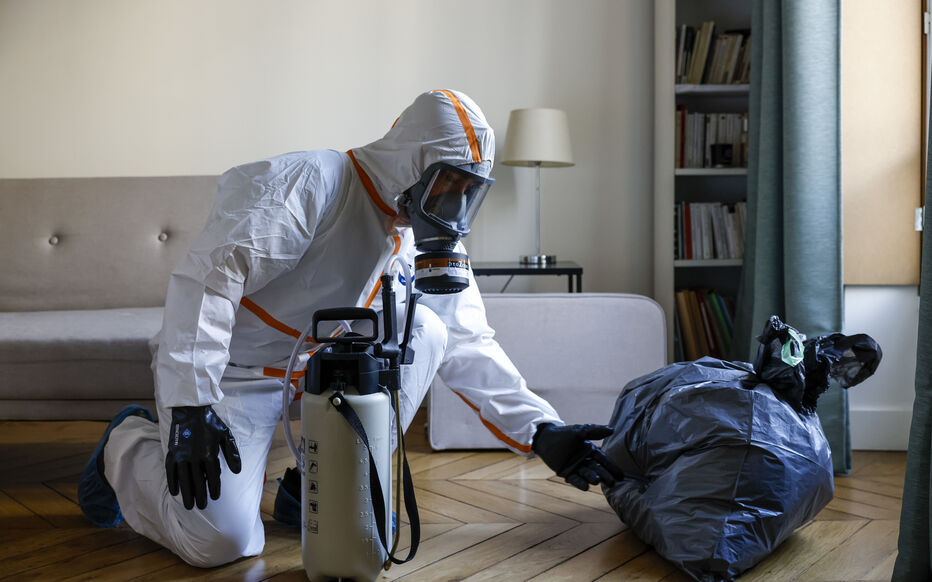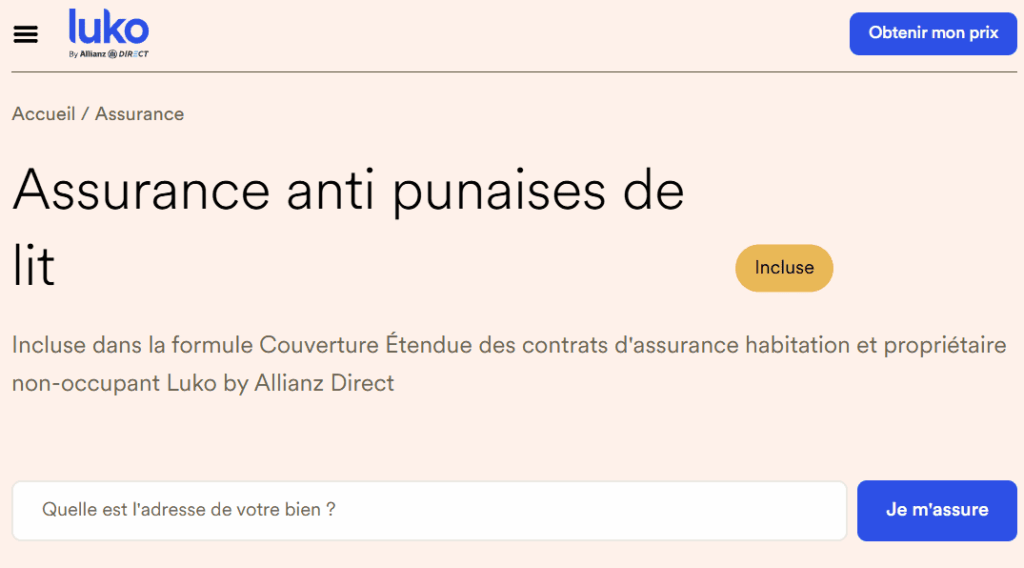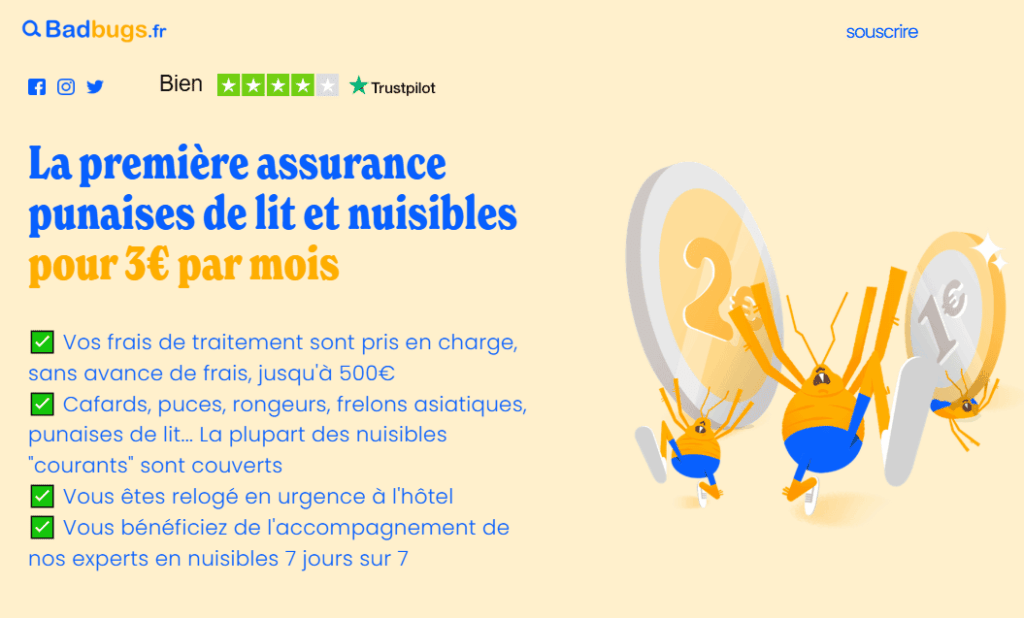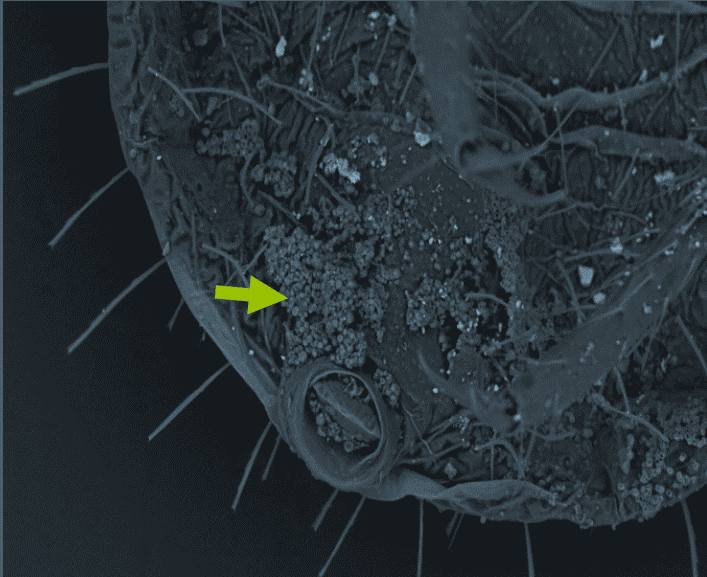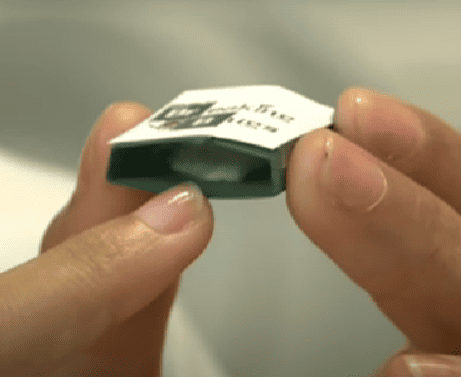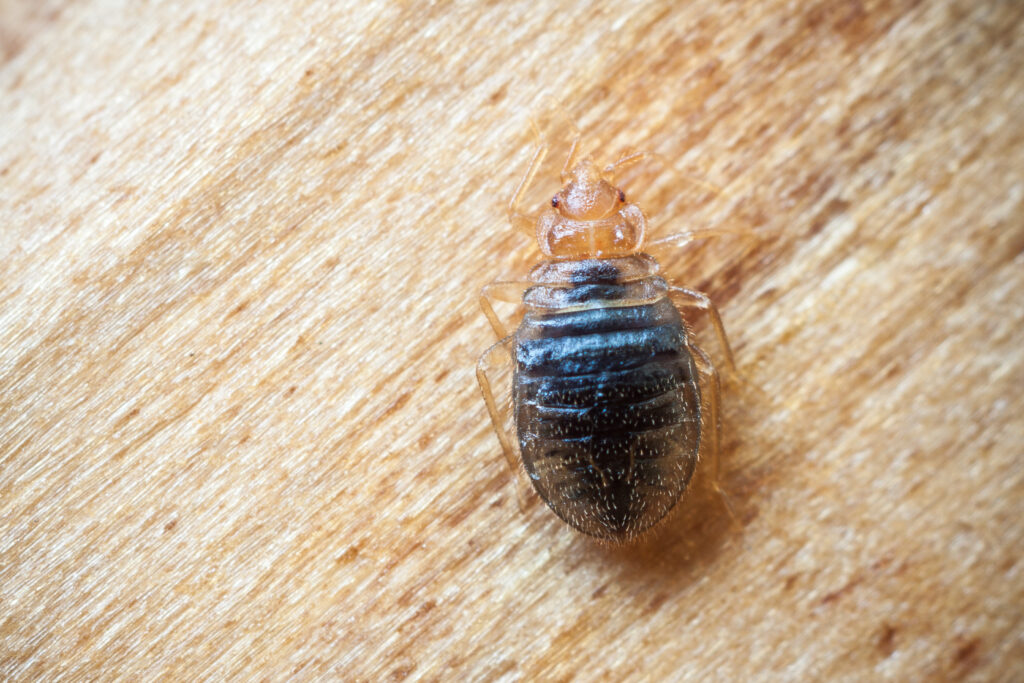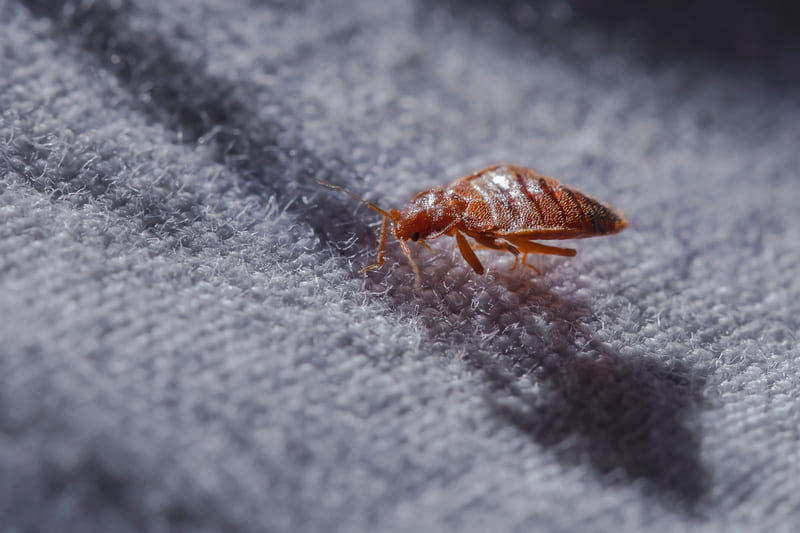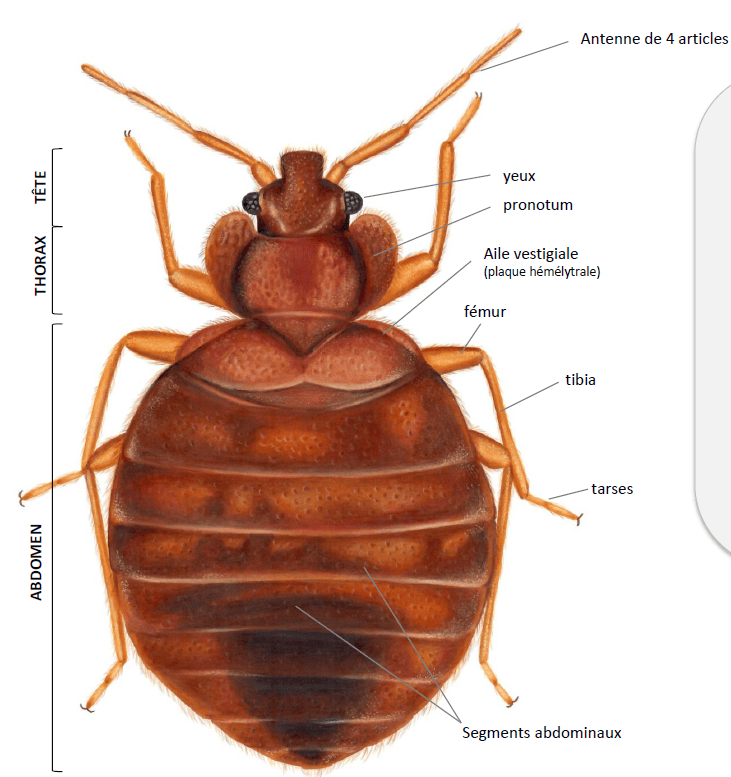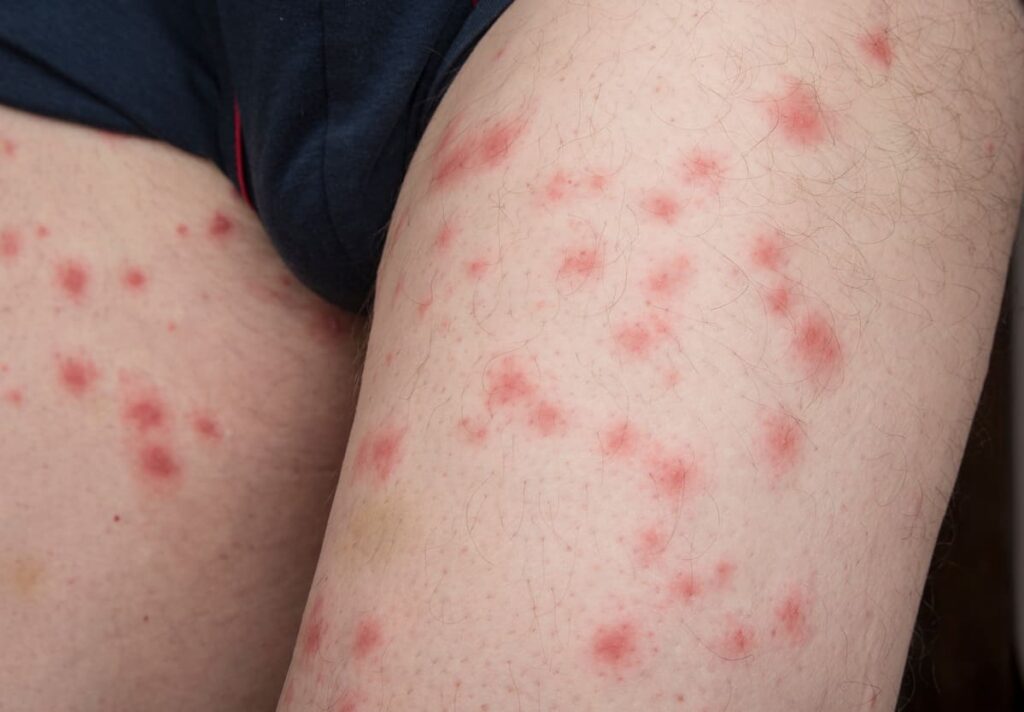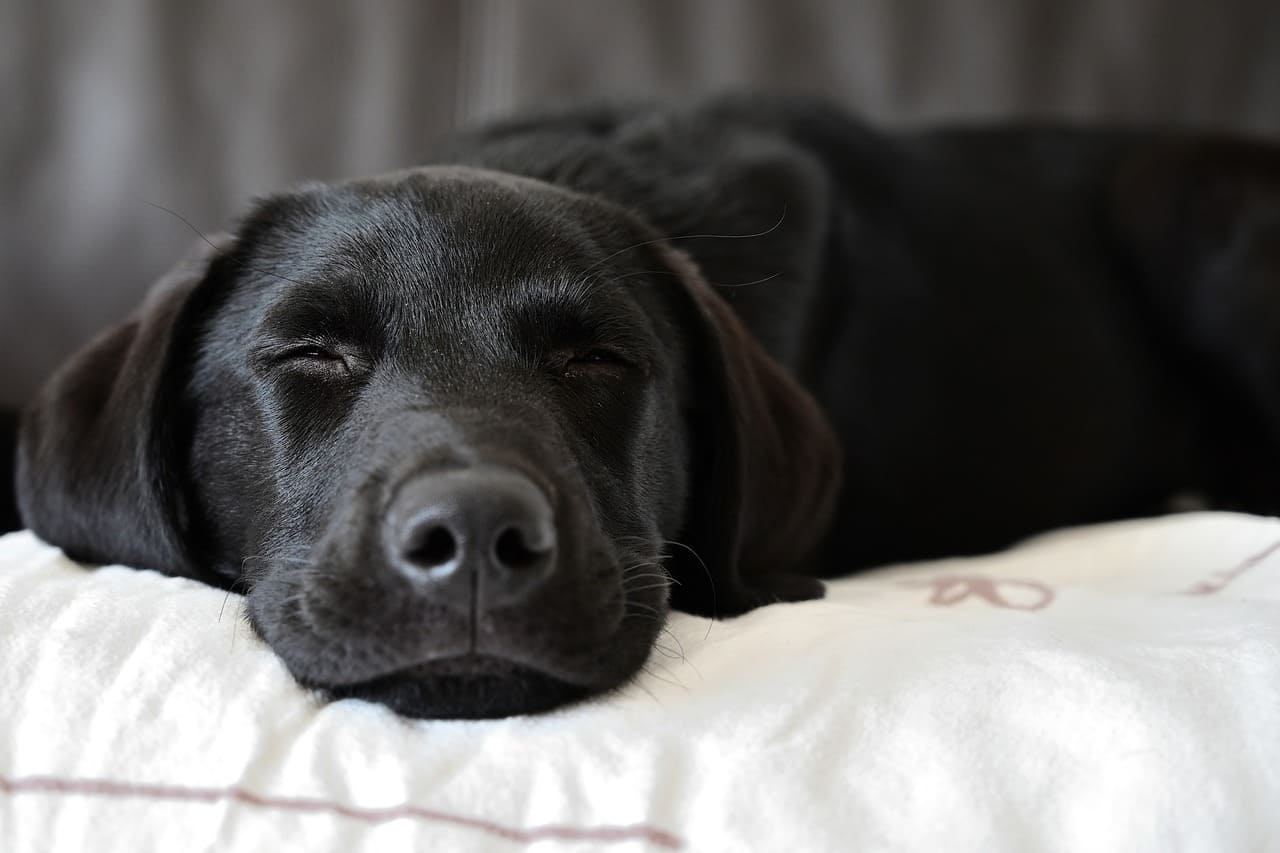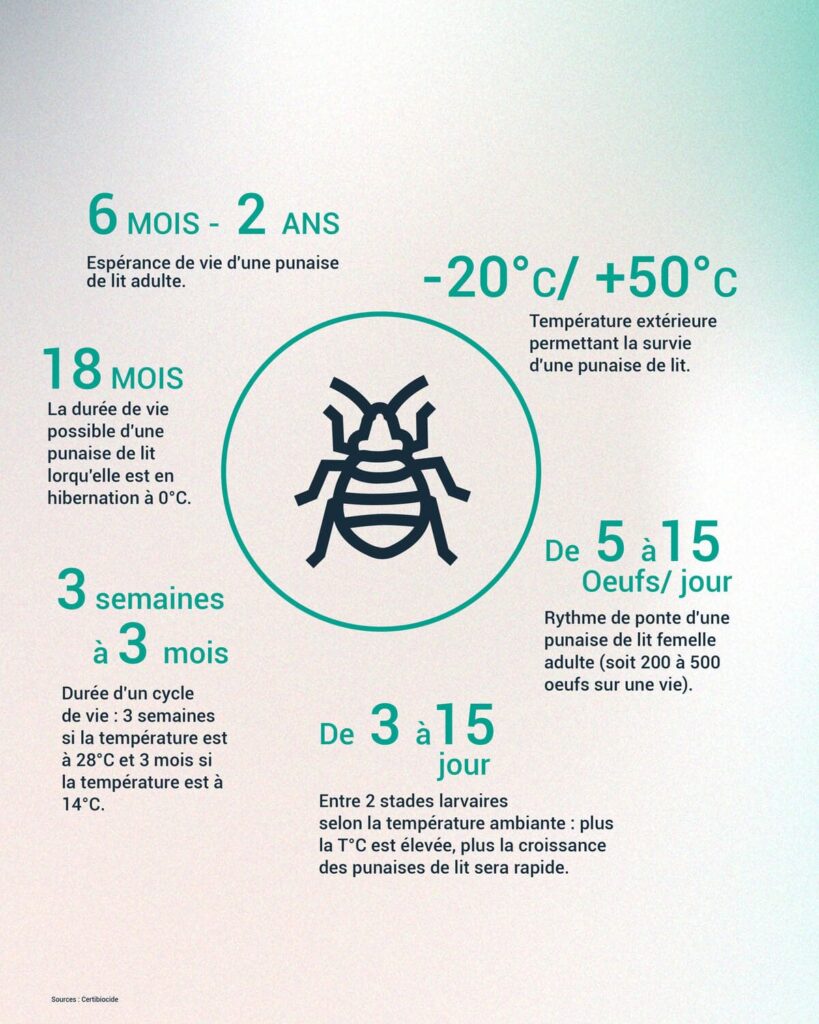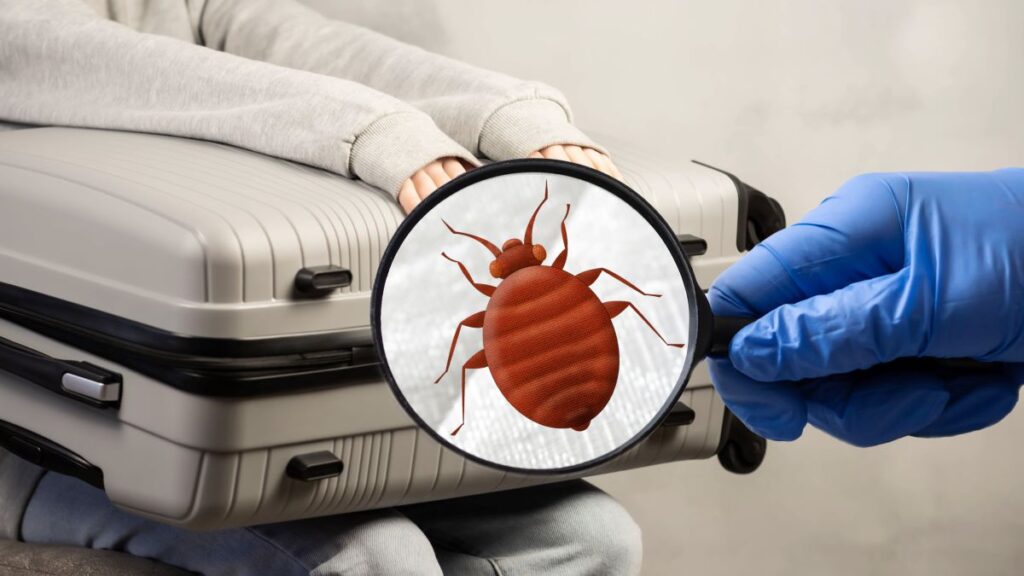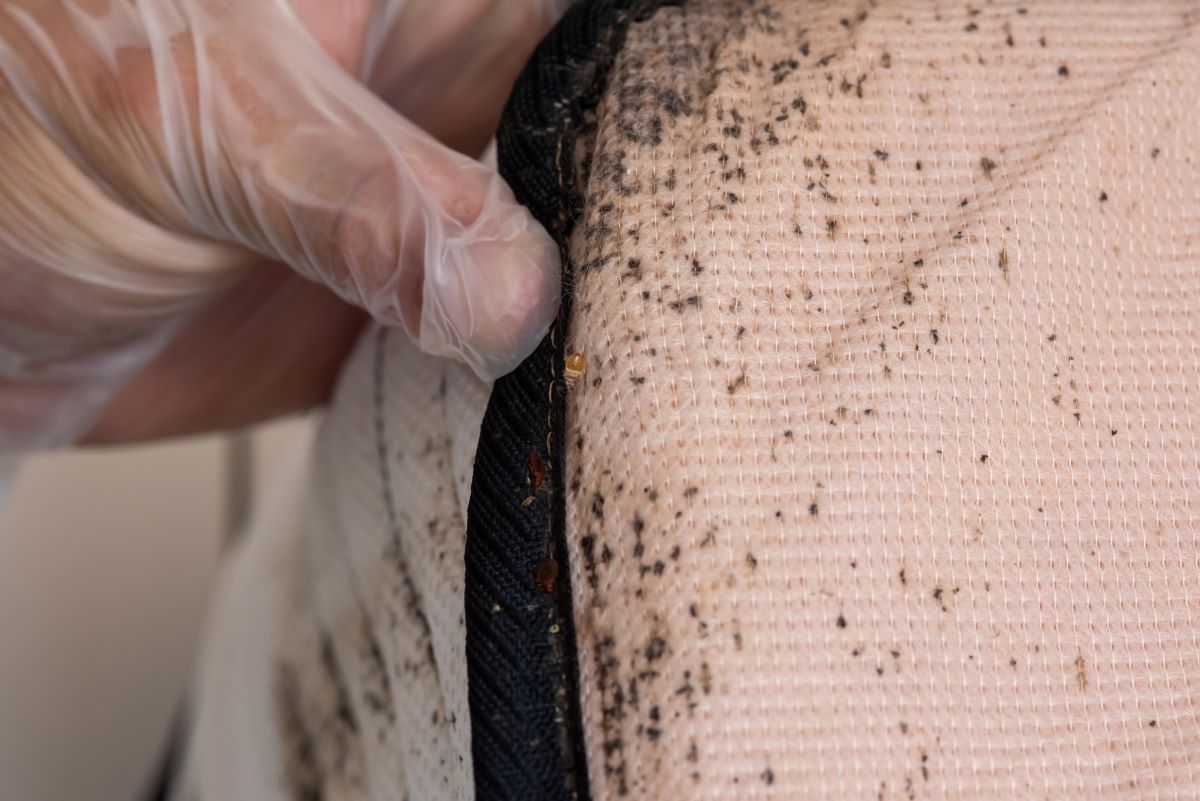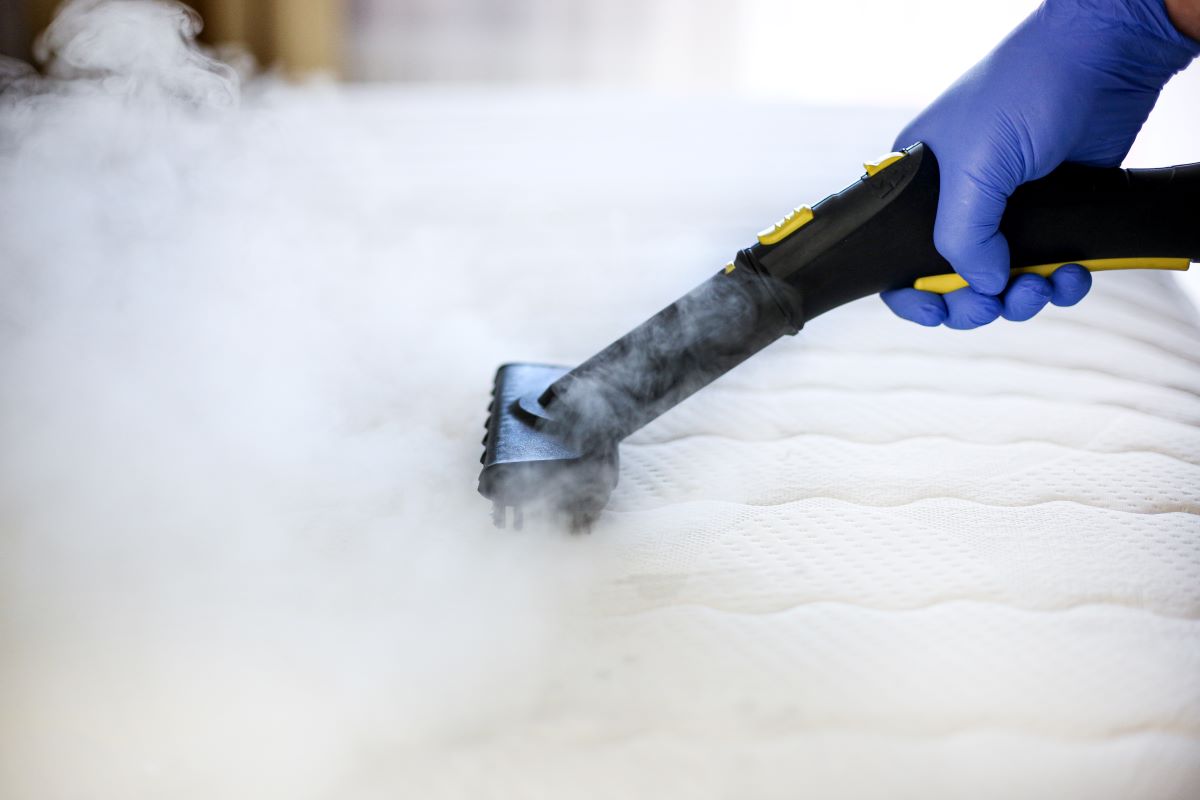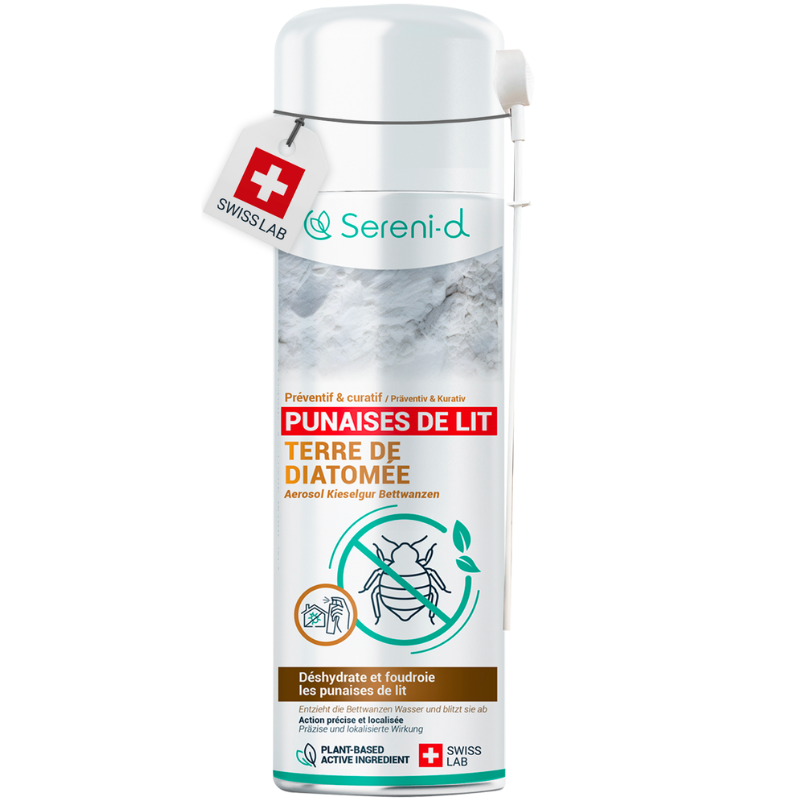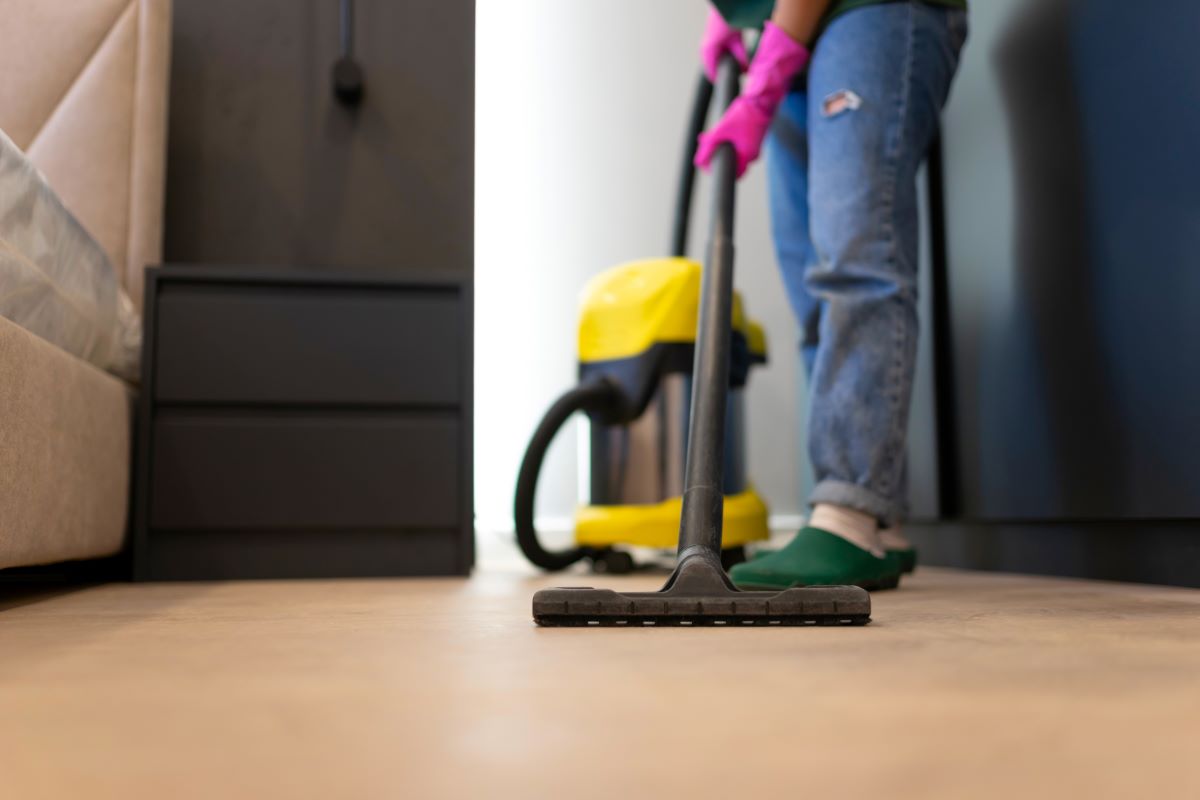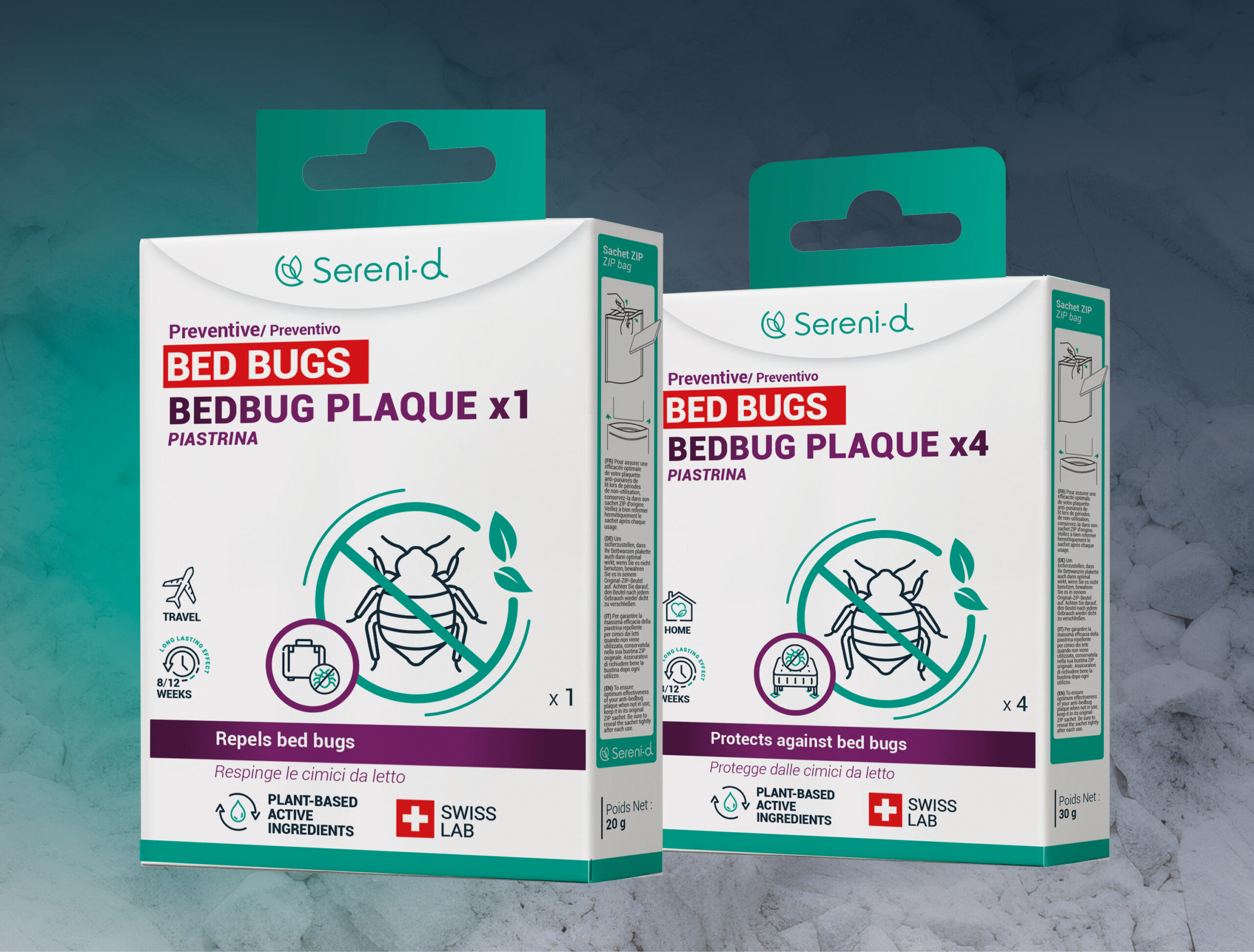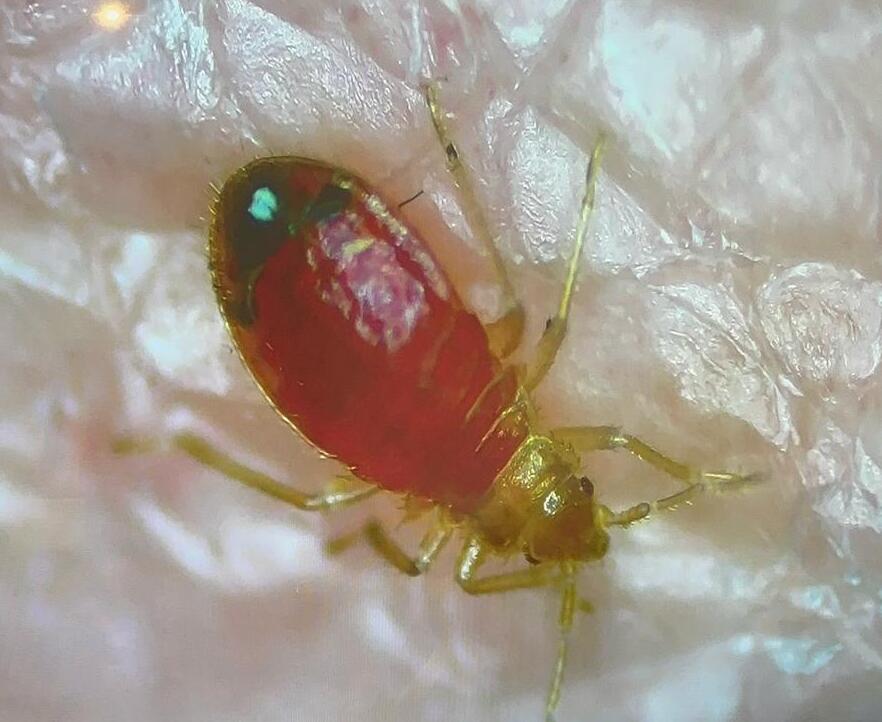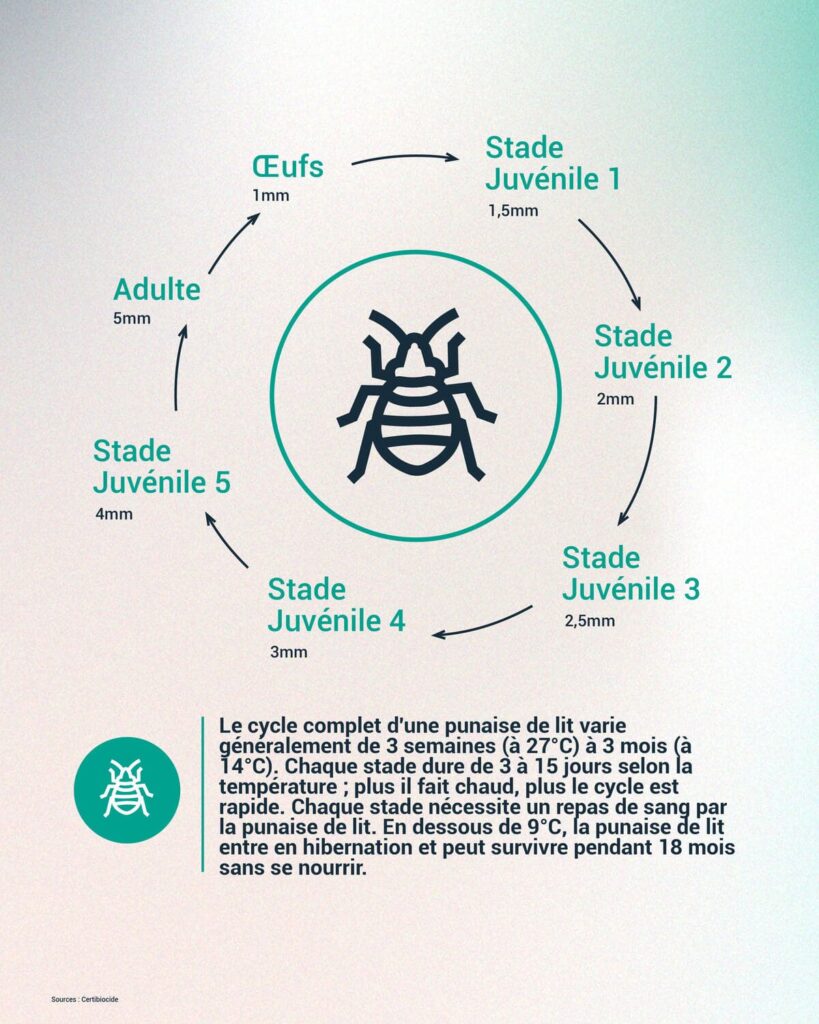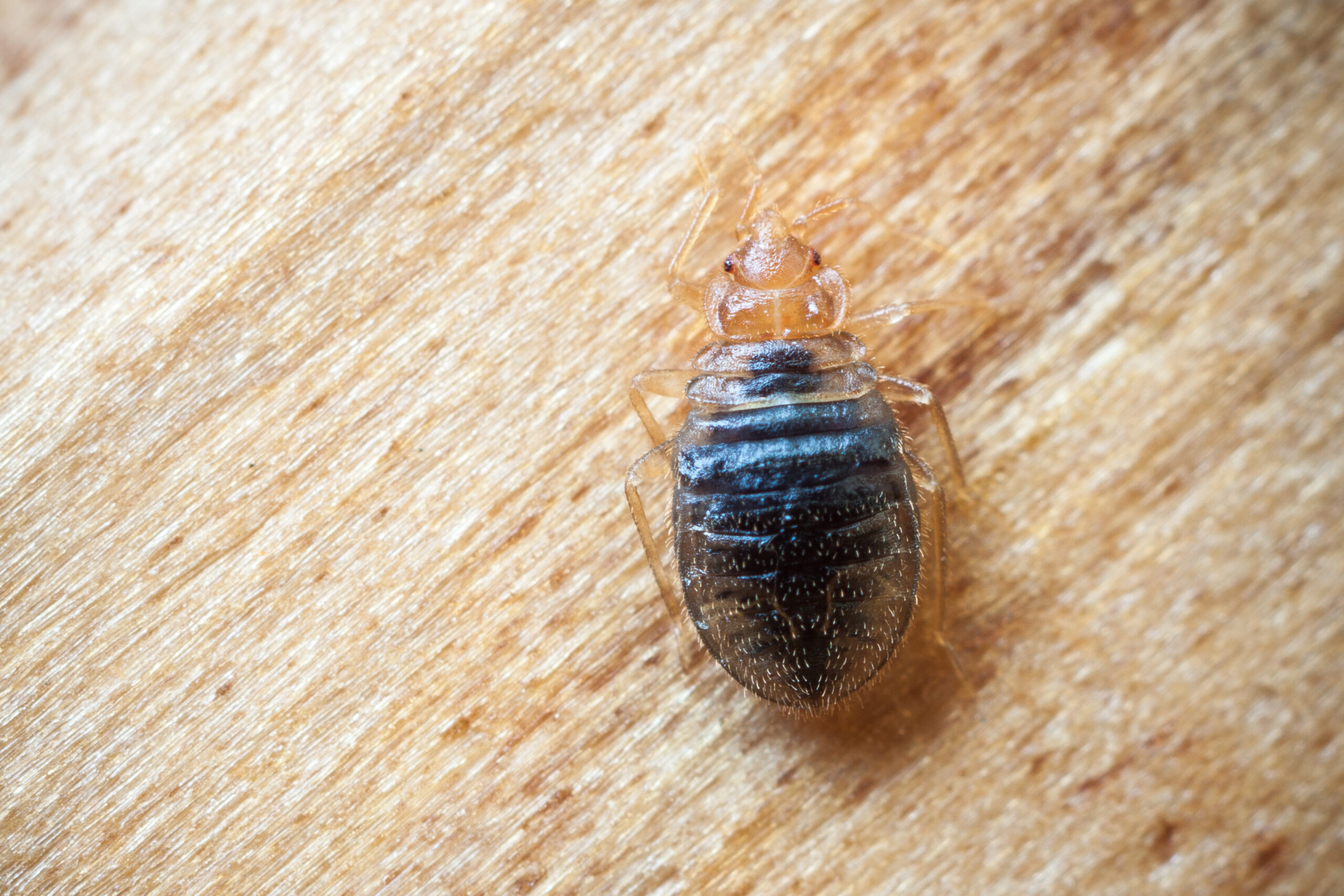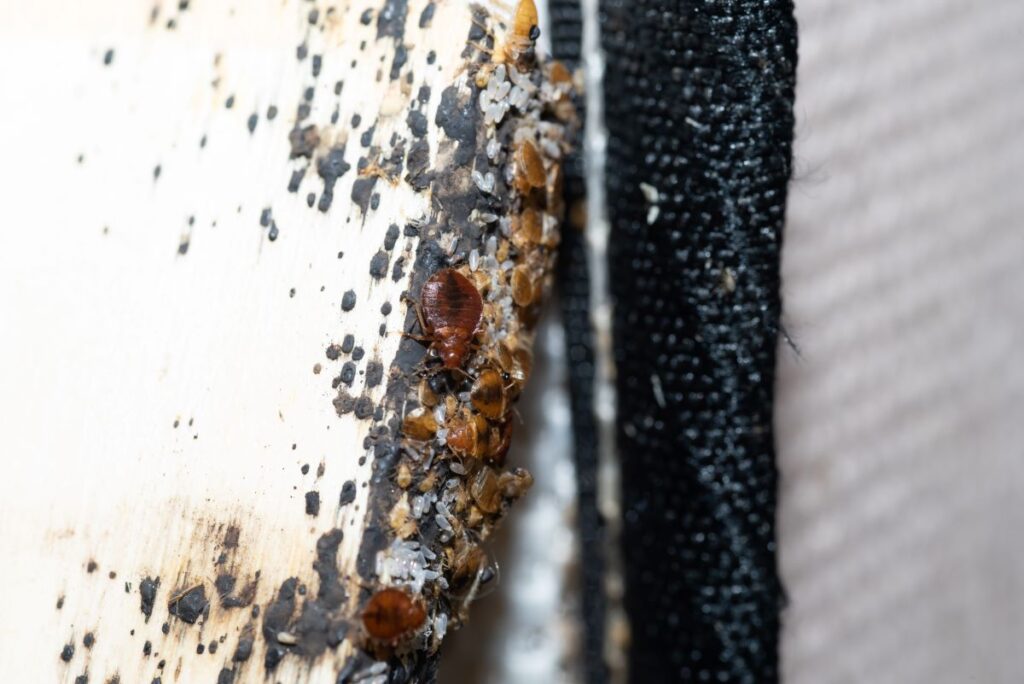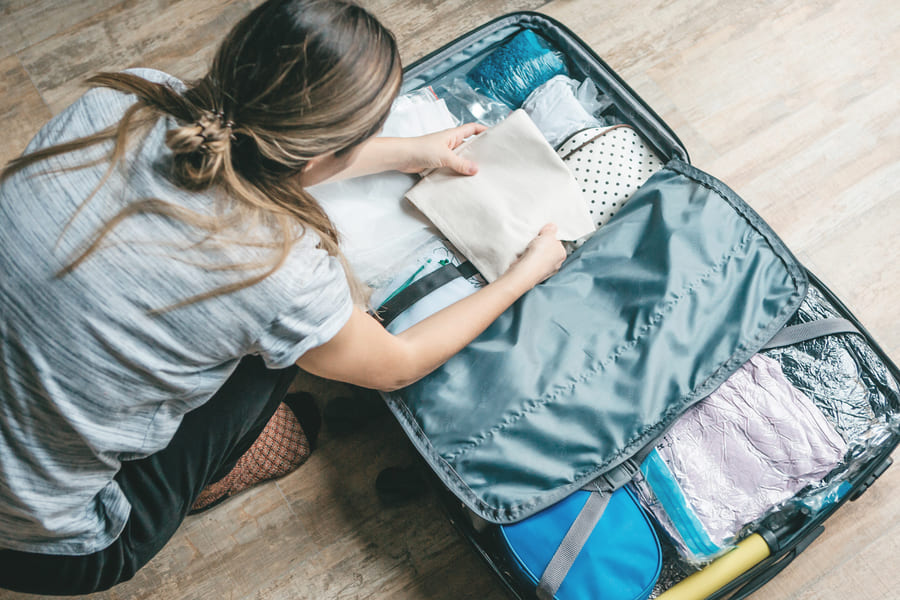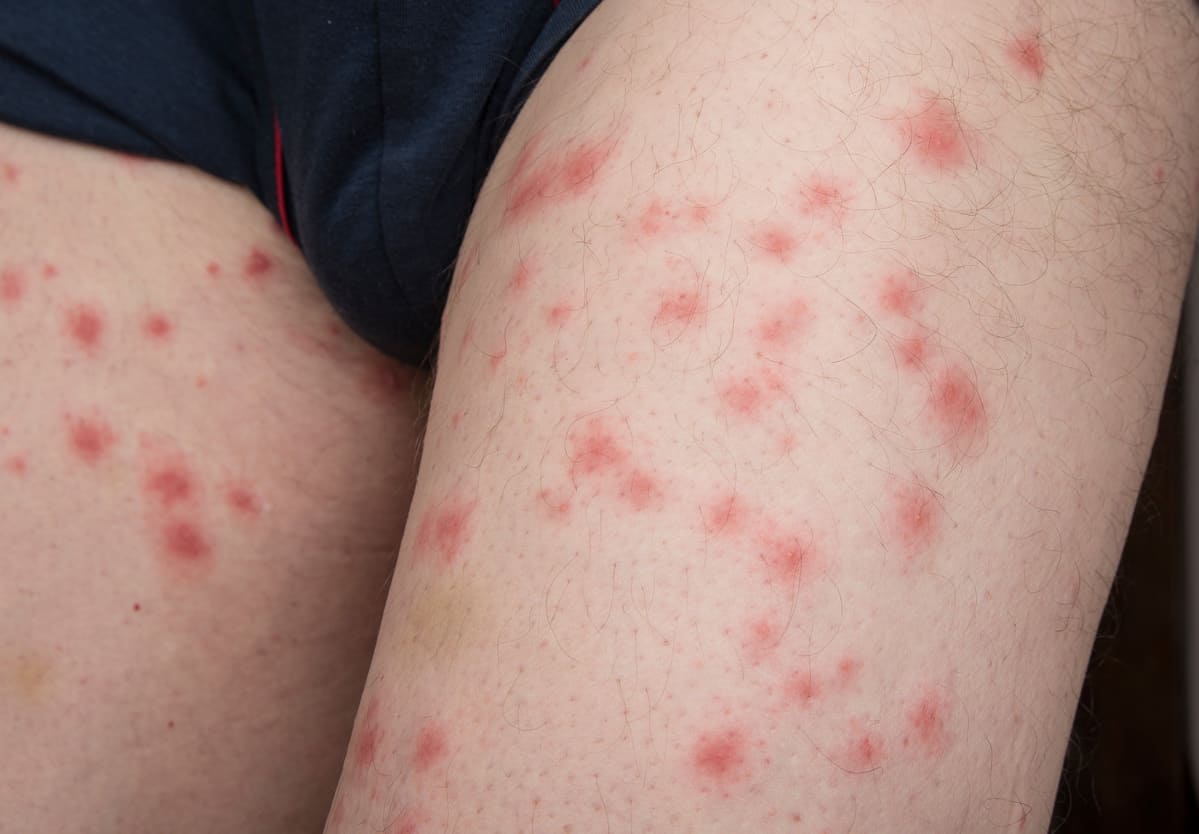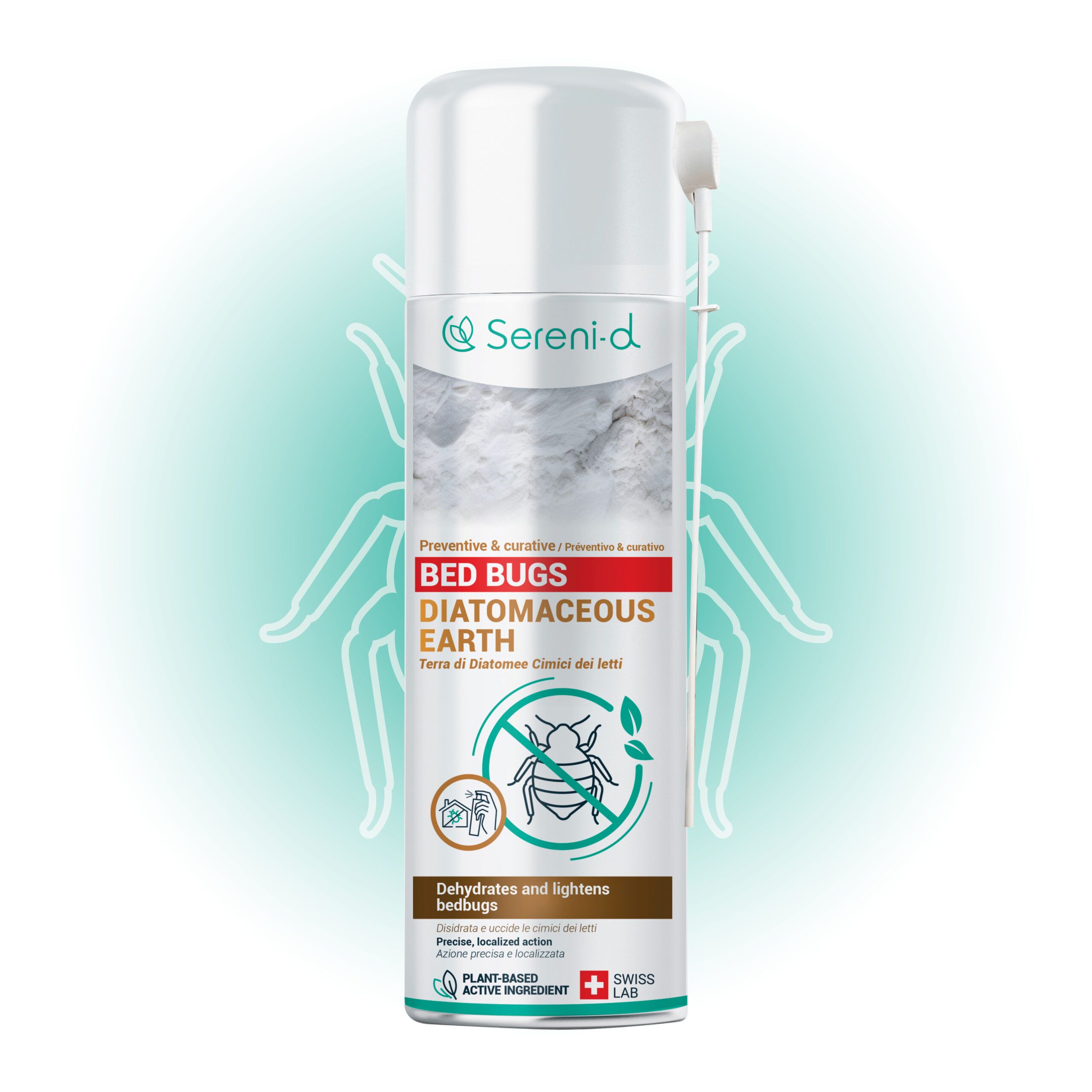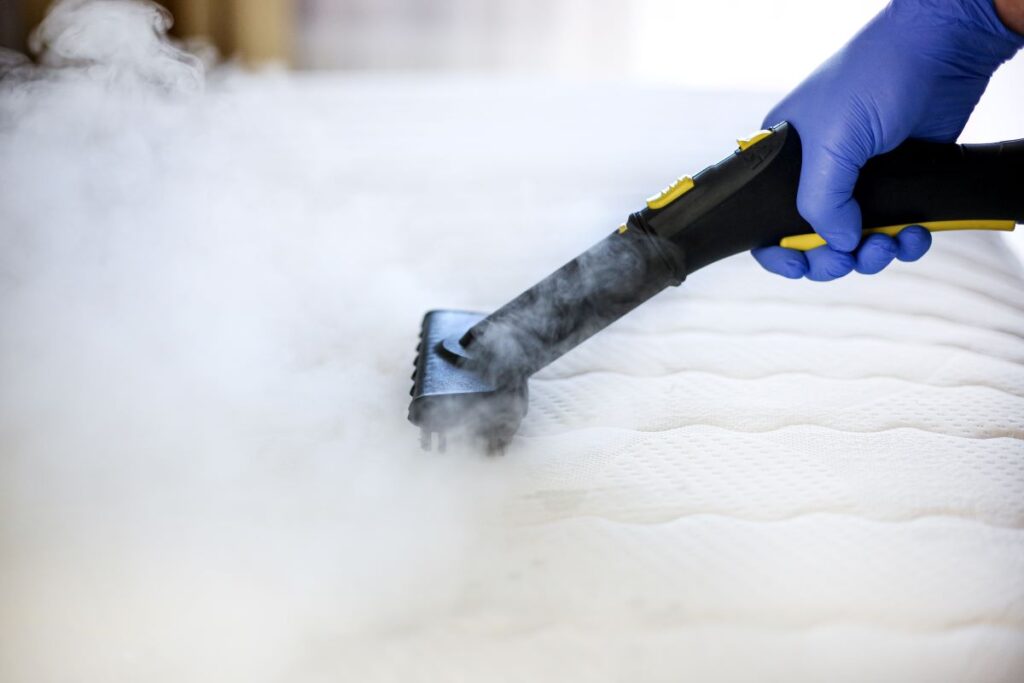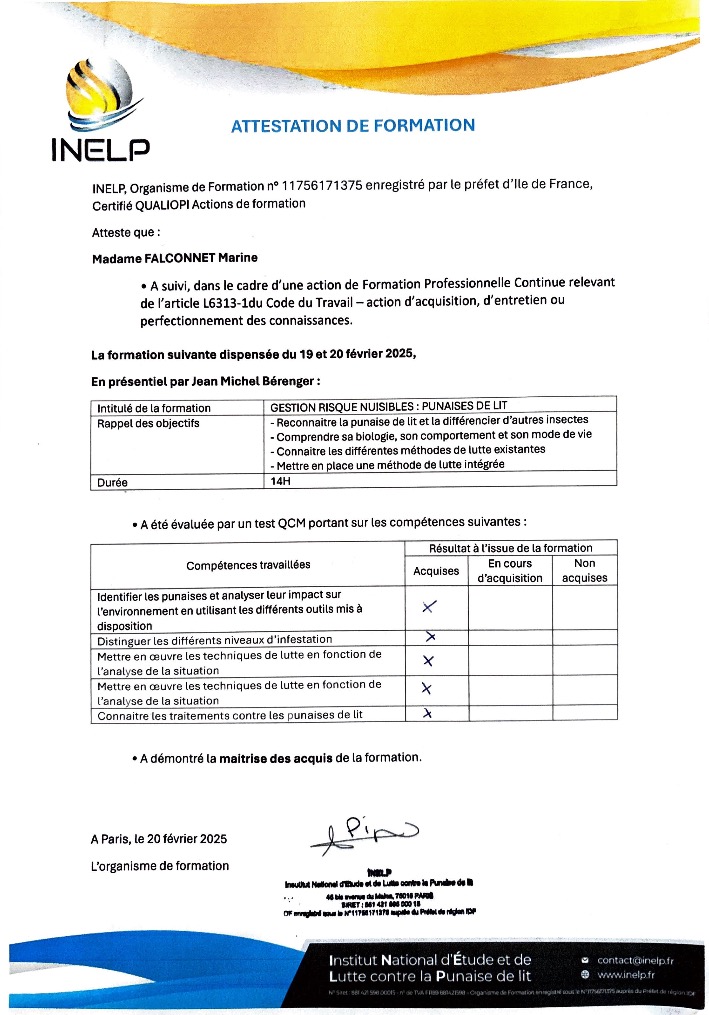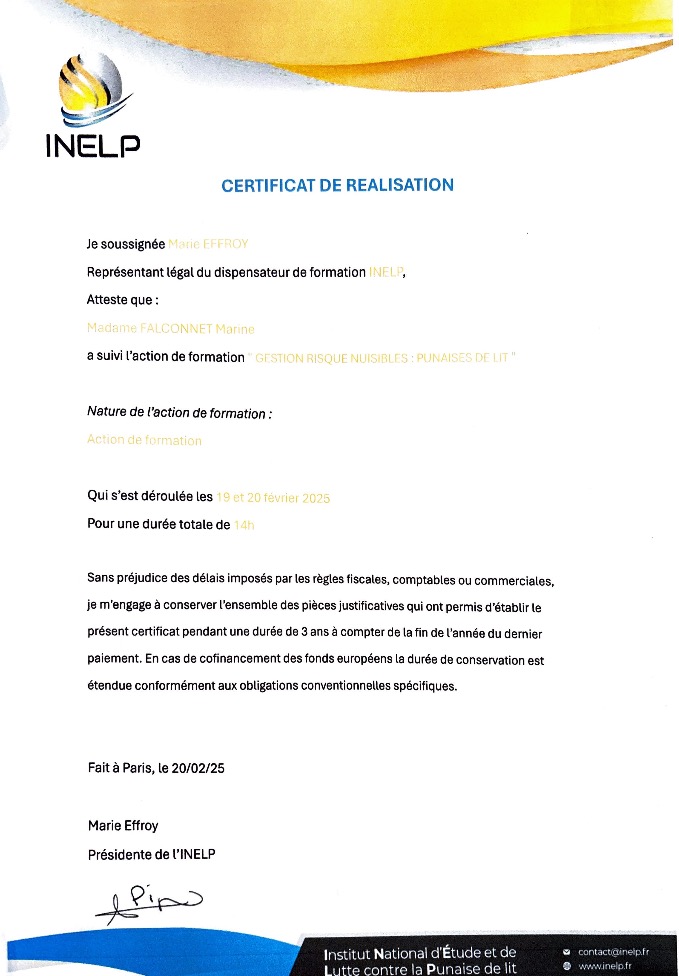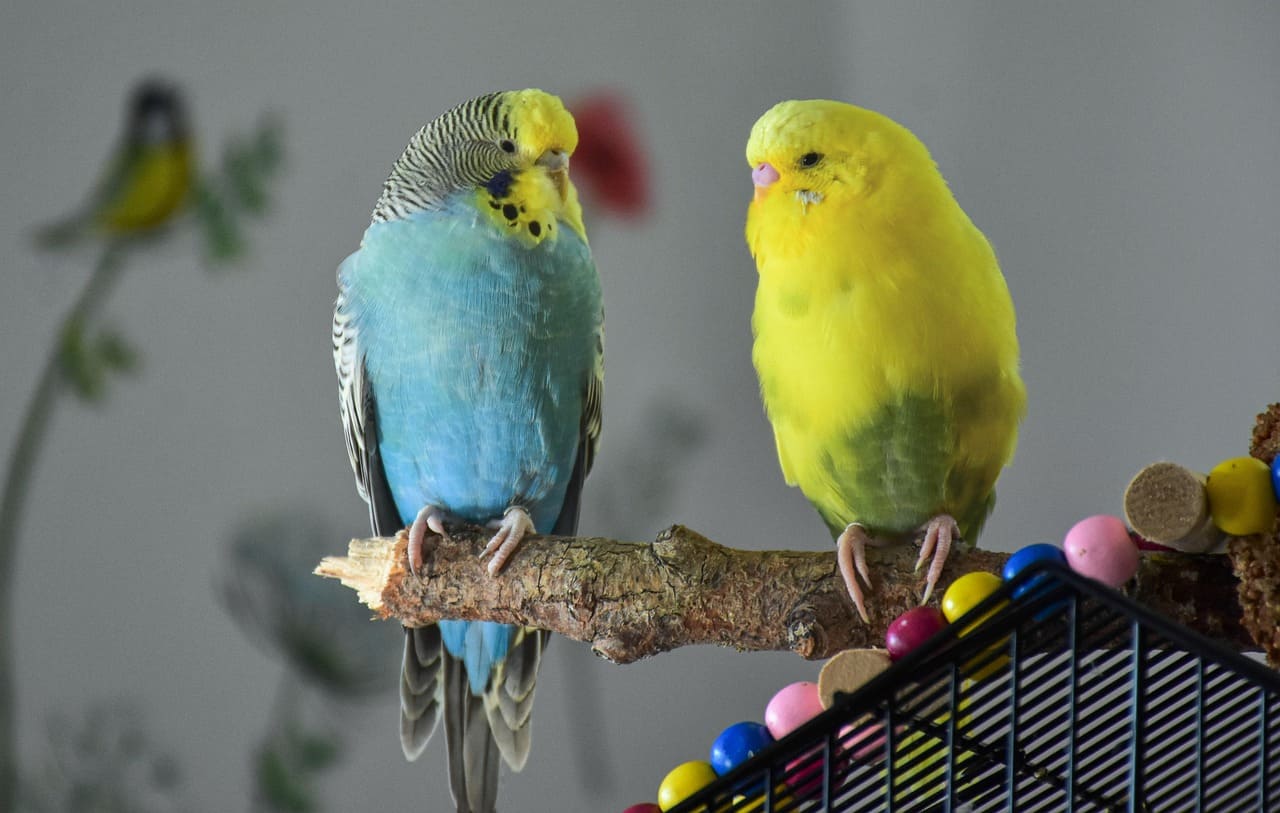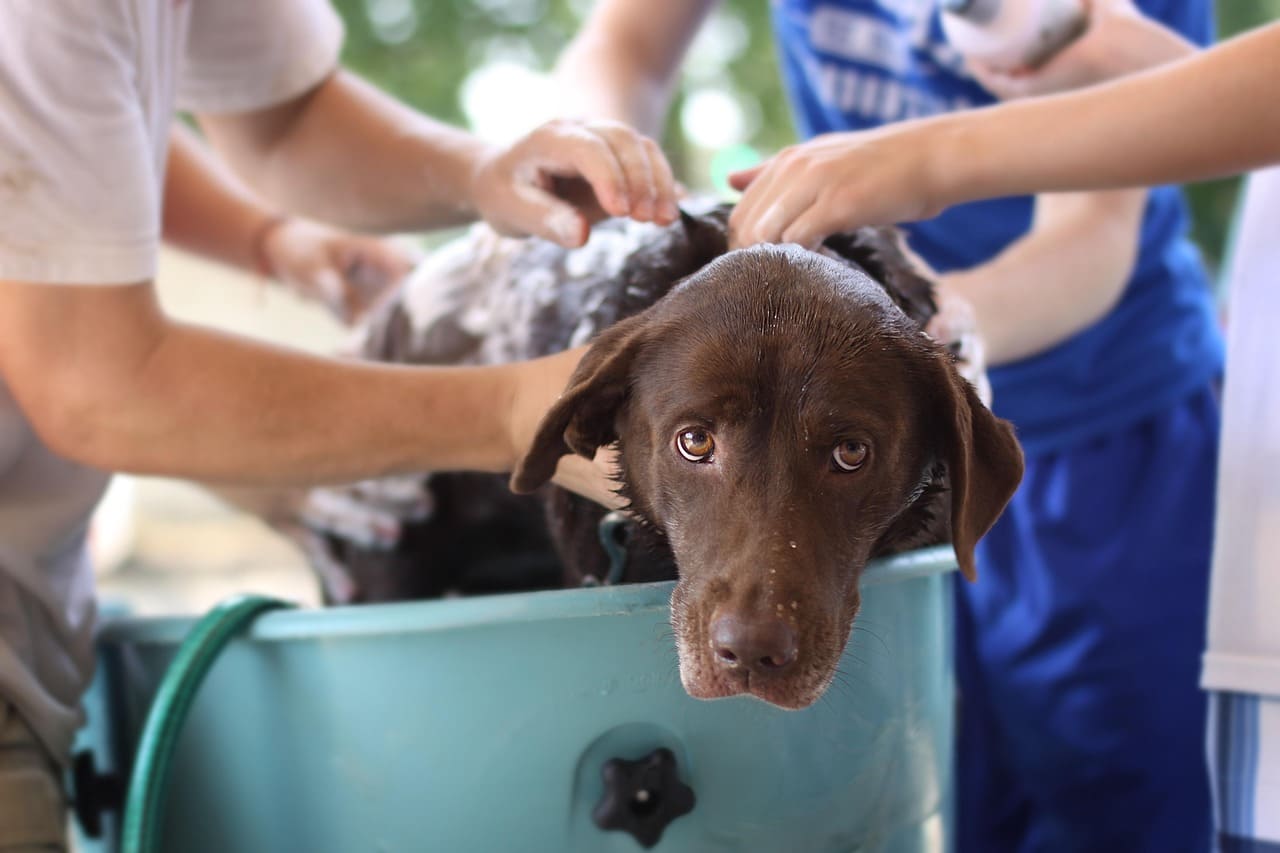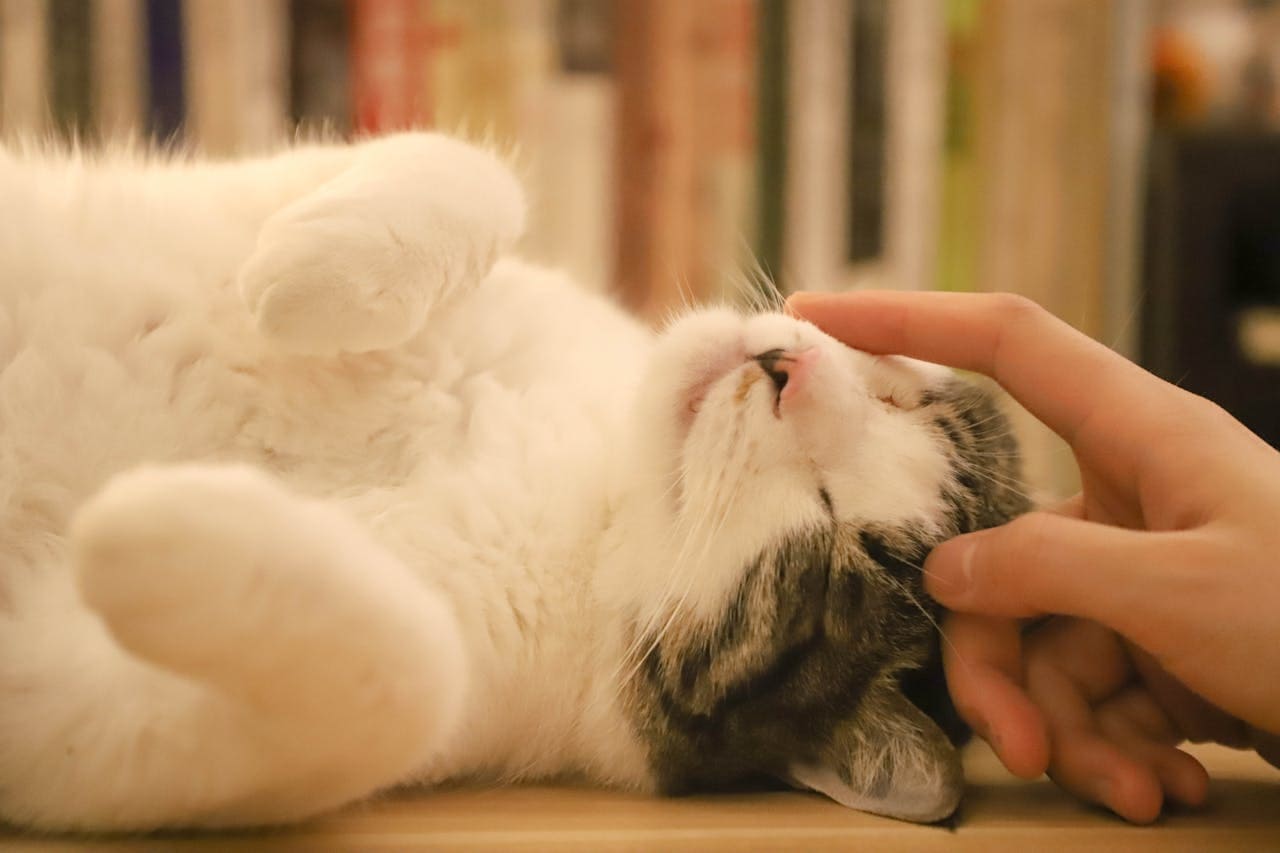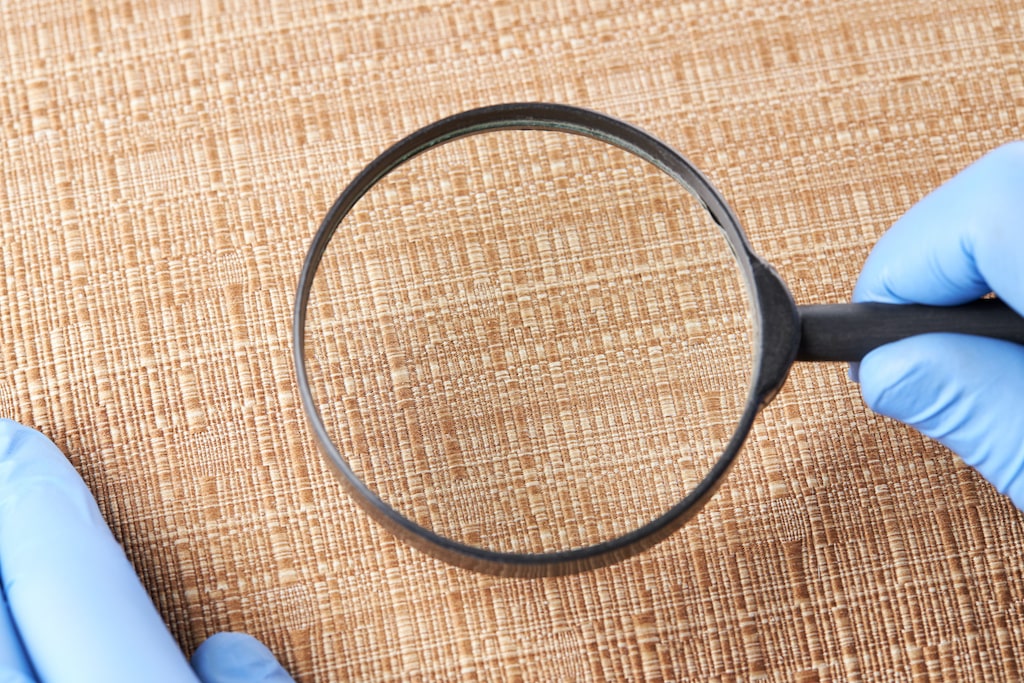
Early detection of bed bug eggs is essential to ensure effective treatment and stop the infestation in your home. Here is our practical advice, accompanied by photos, on where they lay their eggs, how long they take to hatch, how to detect them and how to get rid of them.
In brief
➡️ Bedbug eggs are about 1 mm long, pearly white and stick to surfaces thanks to a waxy substance.
➡️ To detect them, inspect mattresses, bed frames, skirting boards and cracks for small shiny white eggs and black traces of excrement.
➡️ An adult female lays 5 to 15 eggs per day, up to 500 eggs in her lifetime.
➡️ Rapid hatching time: 5 to 10 days at 28°C, 10 to 14 days at 20°C, slowed down below 15°C.
➡️ The eggs are resistant to conventional insecticides; only heat (steam at >120°C) or intense cold (-20°C for 72 hours) can eliminate them.
What do bed bug eggs look like?
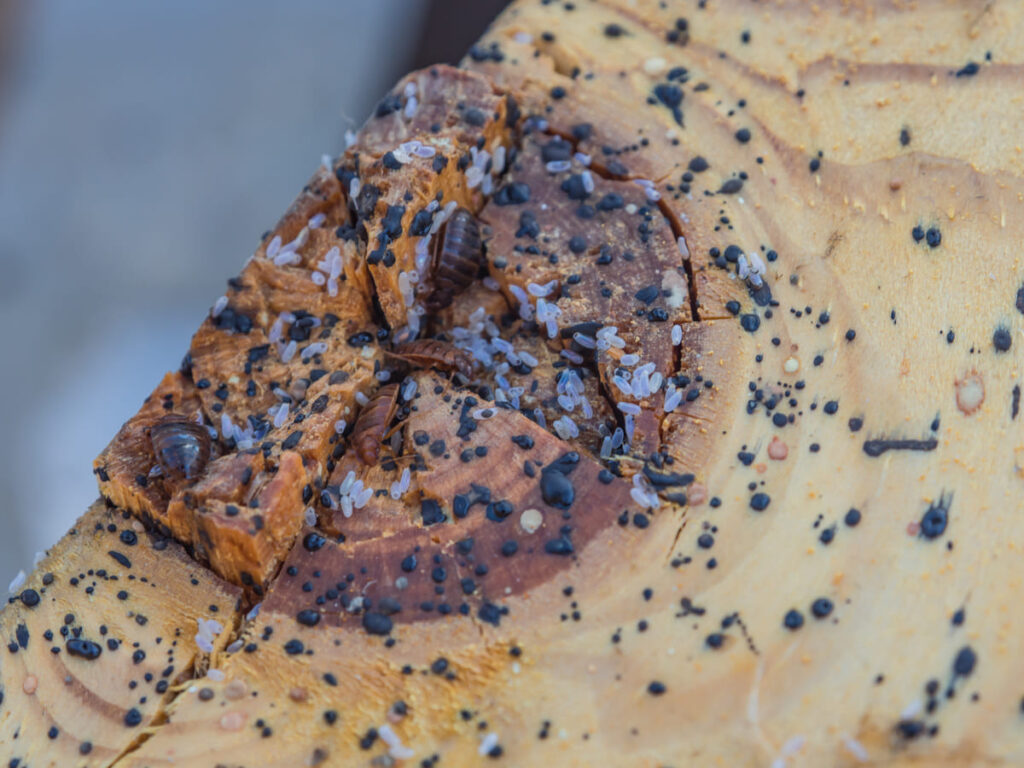
Size and shape of eggs
Bed bug eggs are extremely small and difficult to spot.
Here’s how to recognise them:
✅ Size: approximately 1 mm long and 0.5 mm wide, about the size of a pinhead.
✅ Shape: elongated and slightly curved, resembling a small grain of rice, but much smaller and thinner.
⚠️ Caution: to the naked eye, they can be mistaken for light-coloured dust, dandruff or micro-debris.
Colour and texture
✅ Colour: they are generally pearly white to translucent in colour, with a slight sheen. This colour may change over time, from a more opaque white to a slightly transparent appearance before hatching.
✅ Texture: the surface of the egg is smooth and shiny, almost glossy, unlike dust particles or dry debris, which are dull.
✅ Sticky appearance: each egg is covered with a waxy substance secreted by the female when laying. This natural glue allows the eggs to remain firmly attached to the surface where they were laid (wood, fabric, mattress seams, skirting boards, etc.). This is why they do not fall off even if the fabric is shaken.
In the event of infestation, you may see clusters of eggs stuck together over a few square millimetres, often lined up or grouped together in a fold or crack.
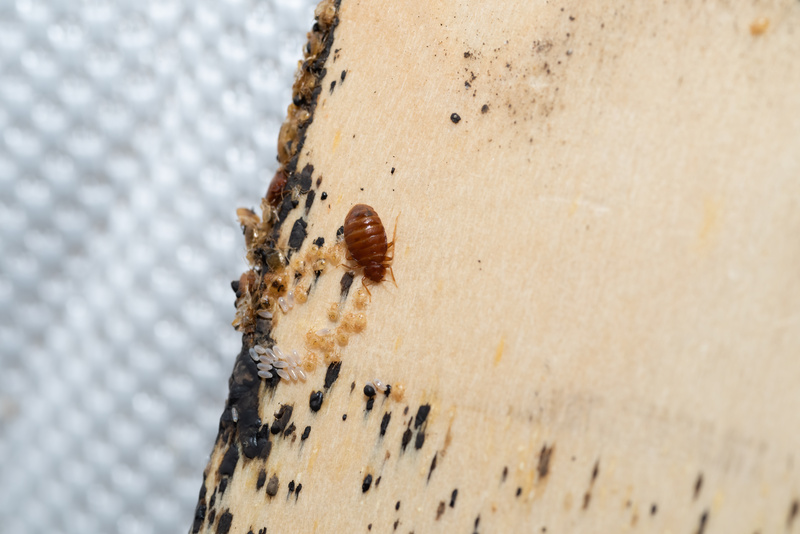
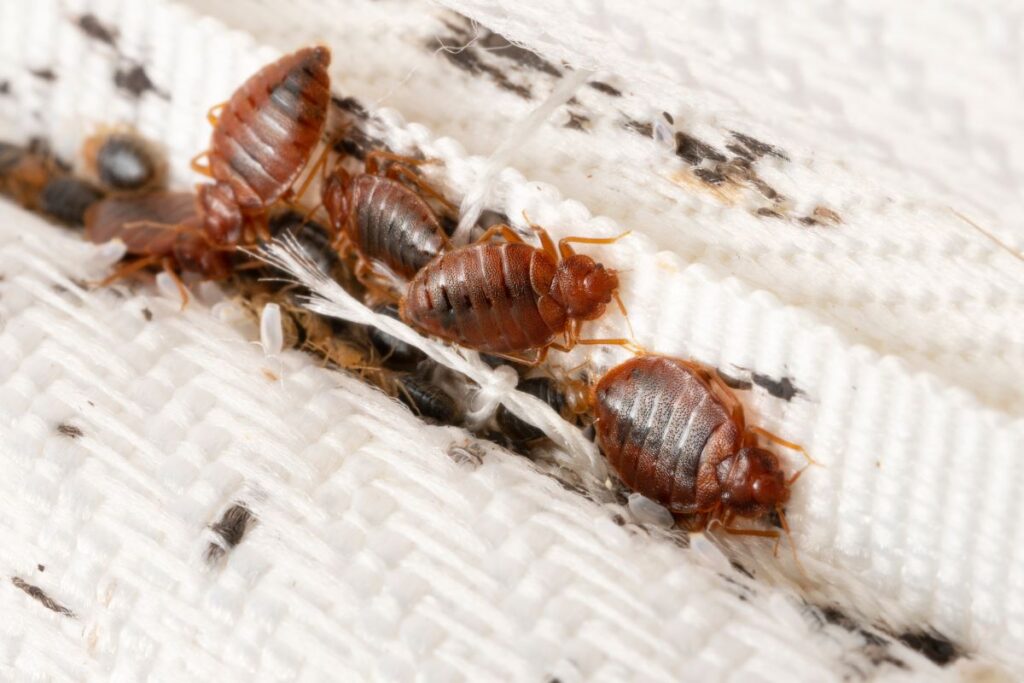
Where do female bed bugs lay their eggs?
Female bed bugs lay their eggs in strategic locations, close to their food source (your blood) and away from light.
Here are their favourite hiding places:
✅ Mattresses and bed bases: they often lay their eggs in the seams, folds, labels and zips of mattresses, as well as under the fabric of upholstered bed bases.
✅ Headboards and bed frames: cracks in the wood, grooves and gaps in metal or wooden frames are ideal places, especially if they are close to where you sleep.
✅ Skirting boards and cracks in walls: female bed bugs like to lay their eggs in small cracks, behind skirting boards, under loose wallpaper or at the junction between the floor and the wall.
✅ Furniture near the bed: bedside tables, bed frames, shelves and even drawers can harbour eggs, especially in cases of advanced infestation.
✅ Textiles and clothing: although less common, eggs may be laid on fabrics left on the floor or piled up near the bed, as well as on curtains or carpets.
See also: How to recognise a bed bug nest
How long does it take for bed bug eggs to hatch?
Hatching time depending on temperature
The hatching time for bed bug eggs varies mainly according to the ambient temperature:
| Ambient temperature | Egg hatching time | Comments |
| 28°C (ideal temperature) | 5 to 10 days | Very rapid infestation in heated accommodation. |
| 20°C (average temperature in a home) | 10 to 14 days | Standard development in an apartment or house. |
| < 15°C | 20 to 30 days or hatching stopped | Hatching is slowed down; temporarily stop below 13°C. |
A bed bug egg can survive for several weeks without hatching if the temperature is too low, then resume its normal development as soon as conditions become favourable.
Rapid life cycle and risk of infestation
As soon as they hatch, young bedbugs (called nymphs) must feed on blood to begin their growth. They then go through five stages before becoming adults, feeding on blood at each stage, which explains why colonies can spread so quickly if no treatment is implemented.
➡️ See also: Bed bug behaviour and biology.
How many eggs can a bed bug lay?
An adult female bed bug lays an average of 3 to 5 eggs per day, provided she has regular access to a blood meal.
Over her lifetime (usually 4 to 6 months, but up to 12 months in ideal conditions), she can lay up to 200 to 500 eggs.
➡️ Good to know: after mating, the female is capable of laying eggs for several weeks, even without mating again. This rapid reproduction cycle explains why it is so important to treat an infestation as soon as the first signs appear.
How can you detect the presence of bed bug eggs?
Signs to look for
Spotting bed bug eggs is not always easy, as they are tiny and well hidden. These insects are nocturnal, so don’t hesitate to carry out a night-time inspection with a torch.
Here’s what to look for:
✅ Small pearly white eggs
The eggs are white, slightly shiny, and measure about 1 mm. They look like tiny grains of rice stuck to surfaces. You will usually find them in clusters, especially in dark hiding places close to the bed.
✅ Traces of excrement
Look for small black spots (similar to felt-tip pen dots) on the mattress, seams, bed frame, skirting boards or headboard. These traces are bedbug droppings, rich in digested blood.
✅ Bedbug skins
Bedbugs moult five times before reaching adulthood. You may therefore find translucent skins (empty shells) near infested areas, indicating their active presence.
✅ Presence of adults or nymphs
During your inspection, you may see live bedbugs. Nymphs are translucent to yellowish in colour, and adults are brown, about the size of an apple seed.
➡️ Good to know: Canine detection is a very effective method for detecting hidden bed bug eggs and bed bugs.
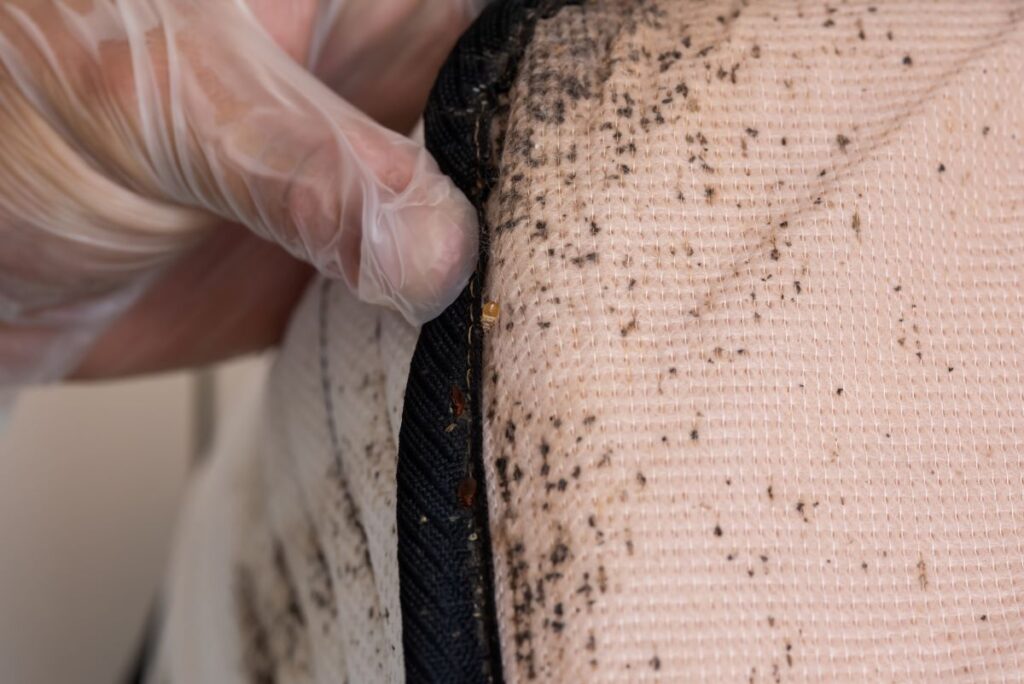
How to kill bed bug eggs effectively?
Unfortunately, bed bug eggs are the most resistant stage of their life cycle. Their waxy shell protects them from conventional insecticides. This makes them particularly difficult to eliminate. Here are the treatment methods recommended by experts.
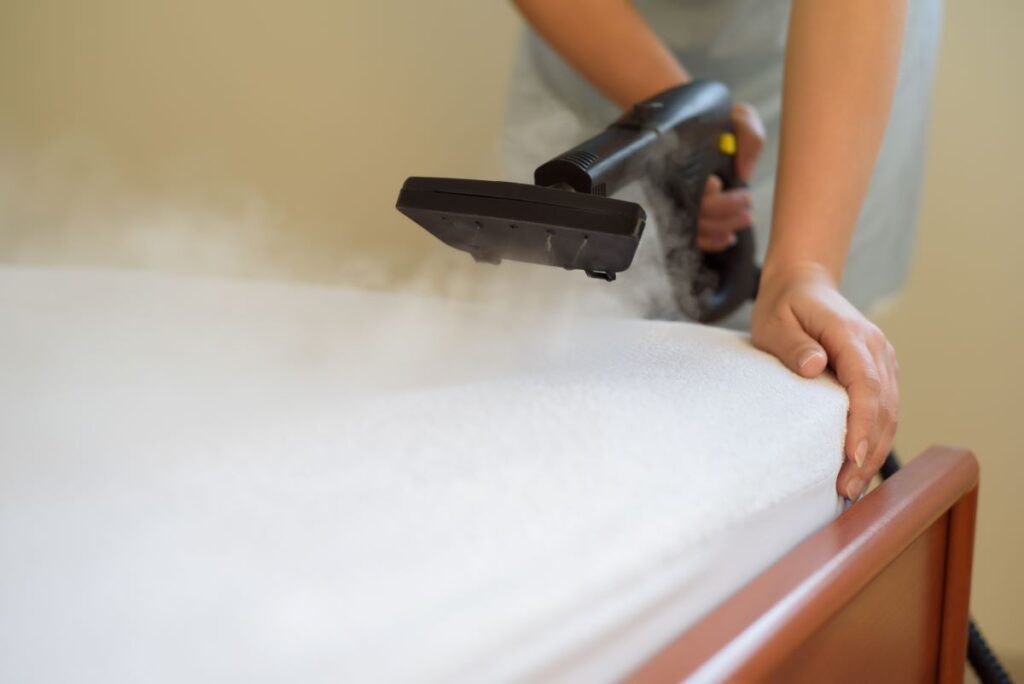
Heat treatment
High temperatures are the most reliable method for eliminating bed bug eggs.
We therefore recommend using a dry steam cleaner (minimum 120°C). For your information, this type of appliance can be rented from specialist DIY stores.
➡️ Slowly steam all infested surfaces: mattress seams, skirting boards, headboards, upholstered bed bases, cracks. Hold the nozzle 5-10 cm from the surface for at least 2 to 3 seconds to reach the inside of the eggs and kill them.
Extreme cold is also a viable option. Freezing should be carried out at -20°C for a minimum of 72 hours.
➡️ Place clothes, bags and small non-washable items in an airtight bag and then directly into the freezer. Please note that a simple freezer compartment is not sufficient; you need a freezer that can actually reach -20°C.
FREEZE Bedbugs
• Natural lightning-fast treatment for bed bugs
• Kills 100% of bed bugs (eggs, larvae, adults) through freezing
• Immediate protection, non-harmful to your health and your family’s health
• Over 50,000 satisfied Sereni-d® customers
FREEZING SPRAY -40°C – INSTANT RESULTS
In stock
The vacuum cleaner: useful but incomplete
Use a powerful vacuum cleaner with a narrow nozzle to suck up any eggs visible in the cracks or seams of the mattress.
➡️ Practical tip: after vacuuming, immediately seal the bag in a plastic bag and throw it in an outdoor bin.
Caution: eggs stick strongly to surfaces. Suction alone is therefore not 100% effective. Always combine with steam cleaning.

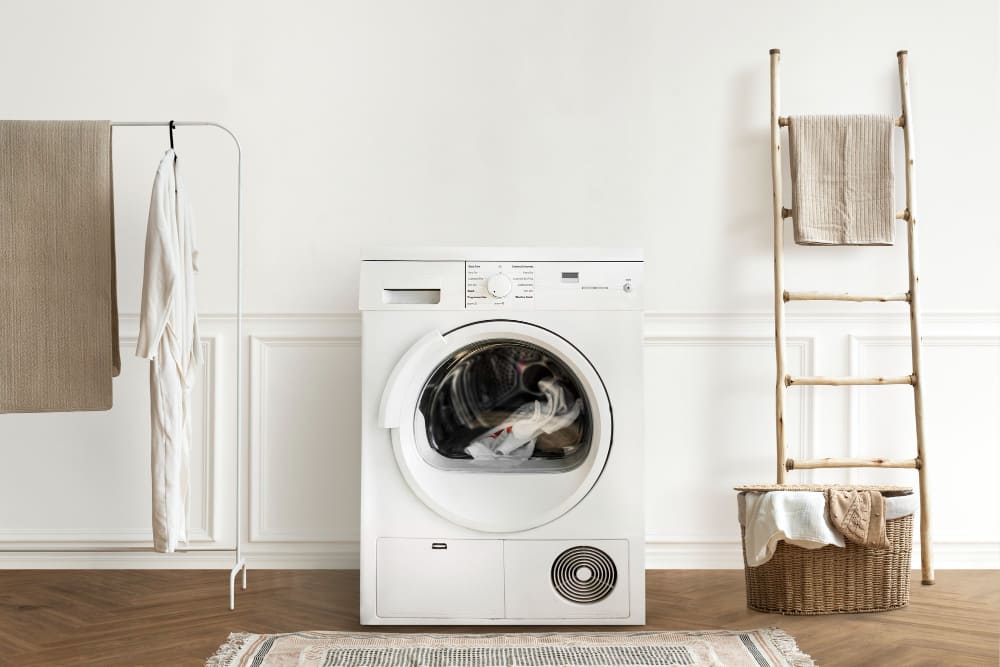
Washing textiles at high temperatures
Wash sheets, covers, clothing and any other machine-washable textiles at 60°C for at least 30 minutes. Bed bugs do not survive at this temperature.
In addition to washing, especially for thick textiles or removable mattress covers, use a tumble dryer on a high heat cycle for at least 30 minutes.
➡️ See also: How to wash your bedding and clothes if you have bed bugs?
Professional treatment: essential in the event of a serious infestation
If eggs are present throughout your home, a certified professional (Certibiocide, ideally Certipunaise) will be able to combine targeted chemical treatments and thermal methods (heat gun, professional dry steam) to effectively eliminate all stages of bedbug development.
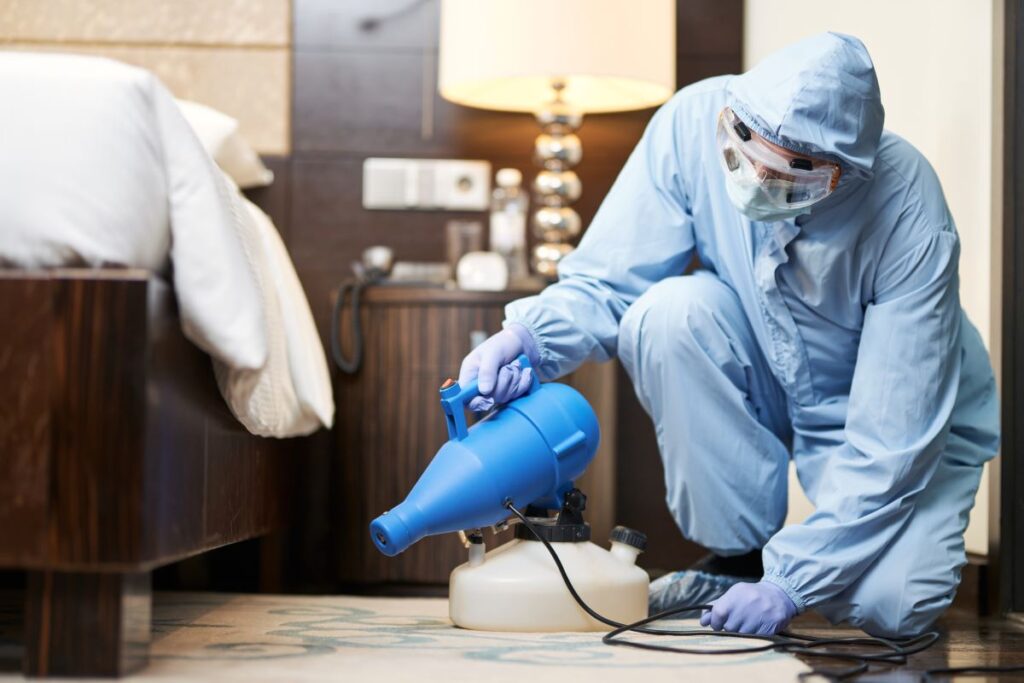
Prevention: prevent further egg laying
Protect your mattress and bedding
✅ Spray a repellent spray on the bedding
SHIELD Bed Bug for Clothing
• Preventive spray against bed bugs
• Repels bed bugs as a preventive measure
• Durable, safe and long-lasting protection
• Over 200,000 satisfied Sereni-d® customers
CONCENTRATED FORMULA – MAXIMUM RESULT
In stock
✅ Use a bed bug cover
The cover acts as a physical barrier: if any bed bugs or eggs are still present in the mattress, they will eventually die inside due to lack of food, and no new bed bugs will be able to enter.
Opt for a full cover specially designed to protect against bed bugs.
It must completely enclose the mattress, with a secure zip and an anti-return system to prevent insects from escaping.
Tip: regularly check the condition of the cover and steam clean the outside to remove any eggs that may have been laid on the surface.


✅ Wash bed linen regularly
Change and wash your sheets, pillowcases, blankets and covers at a minimum of 60°C every week if you live in a high-risk area or in an infested building.
✅ Avoid direct contact between the mattress and the floor or walls
Leave a space between your mattress and the walls to limit bed bugs’ access to sleeping areas. Raise your bed if possible and place bed bug traps under each leg to quickly detect any new intruders.
Other preventive measures
- Place diatomaceous earth in hard-to-reach corners (skirting boards, cracks, behind furniture).
- Vacuum bedrooms regularly and empty the vacuum cleaner into a sealed bag.
- Seal cracks in walls and furniture.

